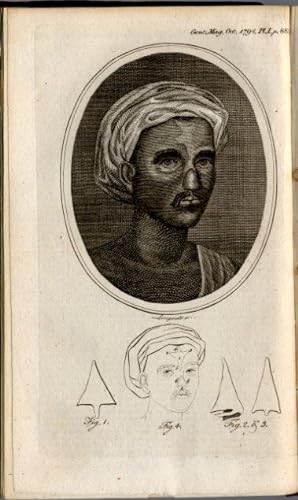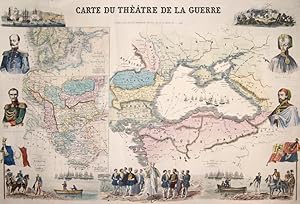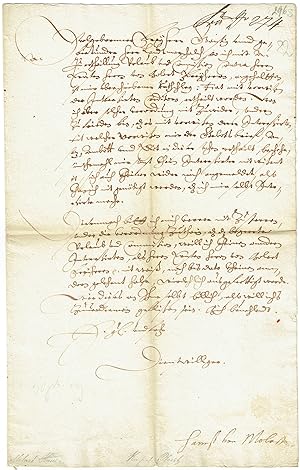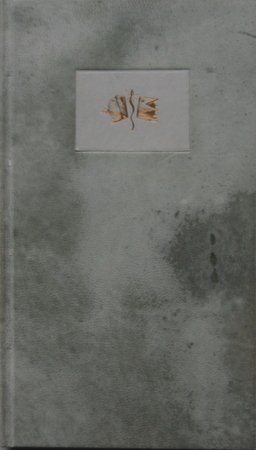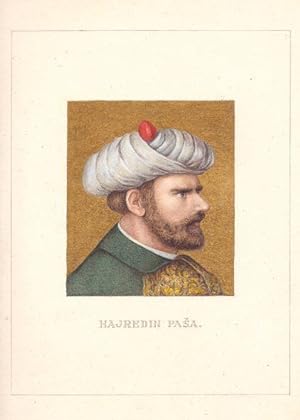Books, Manuscripts & Paper Collectibles, Sultan (Over 4,900 results)
Product Type Clear
- All Product Types
- Books (4,103)
- Magazines & Periodicals (1)
- Comics (22)
- Sheet Music (3)
- Art, Prints & Posters (350)
- Photographs (20)
- Maps (34)
-
Manuscripts &
Paper Collectibles (828)
Condition
Binding
Collectible Attributes
- First Edition (193)
- Signed (47)
- Dust Jacket (225)
- Seller-Supplied Images (3,746)
- Not Printed On Demand
Free Shipping
Seller Location
Seller Rating
-
Red Sea Pilots
Book
A historically important and unique assemblage of three works, including Object A, being the original manuscript of the first modern Ottoman pilot guide to the Red Sea, commissioned by Sultan Abdul Hamid II, it was written by Captain Cemal Bey, who later served as the 'Bahr-i Ahmer Komodoru' (the Commander-in-Chief of the Ottoman Navy in the Red Sea), and was based upon the British Admiralty's 'Red Sea Pilot'; Object B is the extremely rare printed version of the pilot based upon the present manuscript, published in Istanbul in 1891, it is faithful in its content to its antecedent save that it credits Cemal's associate Tevfik Bey as the co-author and is augmented by an additional chapter on navigating the Suez Canal after the writings of Ferdinand de Lesseps, the present example is signed and inscribed in manuscript by Cemal Bey; and Object C, being the very rare second edition of the British Admiralty's 'The Red Sea Pilot', the first modern and comprehensive navigational guide to the Red Sea, and the inspiration for Cemal Bey's work. A. CEMAL BEY (Senior Ottoman Naval Officer). ["Rehber-i Bahr-i Ahmer" / "The Guide to the Red Sea"]. Manuscript, 1889. Small 4° (25 x 17.5 cm): [3], 616 pp. in reverse collation, manuscript, written in Ottoman Turkish in a neat hand in thick black ink; bound in contemporary full red silk with elaborate gilt designs, Ottoman arms to front cover, title within vignette to back cover (Internally clean, crisp and bright, just a few light stains; binding heavily worn but still holding strong); plus 2 additional items found tipped into the back cover: first, is an original photograph of Cemal Bey in naval uniform, measuring 20 x 10.5 cm (irregular size); second is a 'Carte Postale' bearing Cemal Bey's portrait in old age, with a later manuscript inscription, measuring 14 x 9 cm; all housed within a modern custom full dark green calf clamshell box, one panel featuring a glass window, gilt title to spine. [Accompanied by:] B. CEMAL BEY and TEVFIK BEY. [Rehber-i Bahr-i Ahmer / The Guide to the Red Sea]. Istanbul: Istepan Matbaasi, 1307 [1891]. Small 4° (21.5 x 15 cm): vi, 459 pp., [1], in reverse collation, contemporary endpapers; bound in contemporary half-calf with marbled boards, gilt title and decoration to spine; inscribed and signed in manuscript by the co-author Cemal Bey on verso of title (Internally, some light staining and browning especially to early and latter leaves; early leaves creased at upper outer corners, some leaves with trimmed outer corners not affecting text, small tear to upper margin of first leaf with no loss; small tear to lower margin of second leaf with no loss, leaf of pp. 111/2 with horizontal tear entering text with no loss; leaf of pp. 425/6 with tear near gutter entering text but no loss, final leaf creased and torn at gutter with no loss; binding rubbed and worn especially at edges, with loss to upper-outer corner of verso and upper-outer corner of front cover slightly loose, abrasion to front cover). [Accompanied by:] C. HYDROGRAPHIC OFFICE (BRITISH ADMIRALTY). The Red Sea Pilot. From Suez and from 'Akabah to the Straits of Bab-El-Mandeb, and the Arabian Coast thence to 'Aden; with Directions for the Navigation of the Suez Canal. Second Edition. London: George E. Eyre and William Spottiswoode for the Hydrographic Office, Admiralty, 1873. 8° (24 x 15 cm): viii, 255 pp., original light red cloth, gilt title to front cover and spine (Very Good, internally clean and crisp, just some light toning to endpapers, contemporary seller's blindstamp of 'Philip, Son & Nephew' to front endpaper; spine faded). PLEASE SEE OUR WEB PAGE FOR A LONGER DESCRIPTION.
-
Eigenh. Manuskript Les Principautés roumaines Turquie ".
Published by ohne Ort, 1890, 1890
Manuscript / Paper Collectible
8vo. 6 pp., 4to 1p. Zusammen 7 pp. Anmerkungen zur Geopolitik, verfasst während Marcel Prousts Studiums an der l'École libre des Sciences politiques, wo er seit 1890 an der juristischen Fakultät eingeschrieben war. In dem Manuskript geht er auf die rumänischen Fürstentümer ein, die von 1828-1830 von den Russen besetzt waren, er beleuchtet dabei den Status der Fürsten/Herren hospodar" unter russischem EInfluss, die Rumänische Revolution von 1848, den Vertrag von Balta Liman von 1849, der die Fürsten von Moldau und der Walachei, unter die Aufsicht der Russen und Türken stellte, ssischen und türkischen Kommissars standen und das Protektorat der Franzosen: Les Principautés roumaines. De 1828 à 1830 occupés par les Russes. Statut organique pour hospodar à vie sous influence russe. En 1848 secouant ce joug russe aux cris de vive la Turquie. Bibesco se retire. Turquie laisse la Russie réprimer [.] en 1849 le traité de Balta-Liman les soumet à un régime d'exception. Par le traité de Paris (1856) le protectorat de la Russie cesse. Vassales de la Turquie mais autonomes, et on décide réunion simultanée de 2 assemblées nationales et d'une commission européenne d'enquête à Bucharest suivie d'une conférence à Paris ]"Ein weiterer Abschnitt beschäftigt sich mit der Situation in Serbien: [ ] La Serbie. Le sultan lui promettait toujours l'autonomie, s'y engage formelt au traité d'Ackermann en 1826 et en 1830 firman constitutif. Administration nationale indigène. Suzerain: le sultan Prince Miloch Obrenovitch sorte de Pierre le Gd. Procédés barbares. Idées de civilison. En 1838 Russie lui impose une Conson [ ] 1863. Janvier insurrection polonaise. Février Bismark signe avec la Russie un accord de protection respective des frontières. Napoléon demande au Czar de refaire la Pologne. Celui-ci refust envoie plan à François Joseph (Galicie à la Pologne, Silésie à l'Autriche, Vénétie à l'Italie, Adriatique à Autriche, Circassie à Turquie) ]"Proust verfasst eine Chronologie der Jahre 1852 bis 1855 mit weiteren Anmerkungen zur Türkei und zu Serbien, dem Krieg zwischen Serbien und der Türkei im Jahr 1876 und dem zwischen Russland und der Türkei in den Jahren 1877-1878. En 75 révolte en Herzégovine à cause d'abus fiscaux. La Bosnie la suivit puis Montenegro et Serbie. À cette époque existait alliance des 3 empereurs. Bismarck Andrassy Gortschakof. La Fr. était effacée, l'Italie faible. L'Anglet. Regardait moins la question d'Orient. La Cour de Vienne se fait le porte-parole de l'alliance. Sans modérateurs démarche des consuls en juillet-août pour s'entremettre-échoue-note Andrassy demandant des réformes locales et religieuses en Bosnie-Herzégovine. 31 janvier 1876 elle ne parlait pas d'imposer les réformes par la force. La Porte par un firman du 12 décembre avait réédité un programme de réformes générales, les insurgés repoussèrent les concessions comme insuffisantes-assassinat des consuls à Salonique-memorandum de Berlin plus comminatoire, rédigé dit-on par Gortschakof, inspiré des doléances des Bosniaques et Herzégoviniens [.]. Commission de notables herzégov. et bosn. chrétiens chargée de distribuer des services. Évacuation du territoire pour les turcs chrétiens [.]. Mesures de coercition si la Turquie refuse. Armistice pendant lequel les Turcs se renfermeront dans les forteresses. Mai Bismark communique le texte de memorandum aux Austro- Franç. Angl. Italie espère recevoir réponse télégraphique. La Fr. et l'Italie adhèrent. L'Anglet. refuse péremptoirement, le cabinet Disraeli envoya la flotte. On va notifier le memorandum au sultan quand il est déposé par Softas encouragés par Midhat-pacha. Mourad V le remplace. Les puissances suspendent alors toute démarche. La Bulgarie se soulève à son tour. Tchernaief, un des meilleurs officiers du Czar commande l'armée serbe. Milan profite du désarroi pour attaquer les Turcs. Battu. Attaque des Circassiens en Bulgarie. Gladstone fait paraître le pamphlet Bulgarian Atrocities. L'Angl. prend l'initiative de l'intervention. Disraeli forcé de suivre. Les propositions russes trop radicales, font tomber l'ardeur humanitaire des Anglais. Les Serbes avancent été de nouveau battus et la Prusse se trouve engagée à ne pas les laisser périr [ ]"Nach seiner Militärausbildung kehrte Proust 1890 nach Paris zurück, wo er sich an der juristischen Fakultät einschrieb. Durch Bekanntschaften zu schillernden Personen des gesellschaftlichen Lebens, wie Robert de Montesquious, erhielt er Zutritt zur Pariser Oberschicht. Von 1890 bis 1891 veröffentlichte er eine regelmäßige Gesellschaftskolumne in der Zeitung Le Mensuel. 1896 kam sein erstes Buch, Les plaisirs et les jours" heraus.
-
Sammlung von Dokumenten zur Familiengeschichte aus fünf Jahrhunderten.
Published by Verschiedene Orte, 1565 bis 1945., 1945
Manuscript / Paper Collectible
Die umfangreiche Sammlung zur Geschichte der ursprünglich aus Meißen und der Lausitz stammenden, seit dem Ende des 14. Jahrhunderts durch den Deutschen Orden nach Preußen gekommenen Familie, die bis 1699 als reichsfreiherrliche Linie bestand und hernach in eine reichsfreiherrliche und eine gräfliche zerfiel, umfaßt zahlreiche Dokumente aus der Geschichte der reichsfreiherrlichen Linie. Es liegen vor: A: Friedrich I. (1657 1713): 2 Urkunden mit jeweils e. U. *) Consens über den Verkauf des Lehnguts Schweinbraten an der Spree. Köln, 17. Juli 1705. 6 SS. auf 4 Bll. Folio. **) Lehensbrief über den Distrikt Halt-Großburg. Köln, 4 SS. auf 4 Bll. Folio. Beide Dokumente für Friedrich Wilhelm von Kanitz (165 1719), Landratsdirektor und Hauptmann zu Brandenburg. 1706 zum Wirklich Geheimen Rat und Obermarschall ernannt, folgte seine Bestellung zum Oberburggrafen im Königreich Preußen i. J. 1711; 1701 hatte er das Herrenhaus in Podangen errichten lassen. B: Friedrich Wilhelm III. (1770 1840). 11 Briefe mit e. U. Memel und Berlin, 1807 bis 1836. Zusammen 5¼ SS. auf 13 Bll. 4to. An Karl Frh. von Canitz und Dallwitz. C: C: Friedrich Wilhelm IV. (1795 1861). *) 14 Briefe mit e. U. bzw. Paraphe. Berlin und Potsdam, 1840 bis 1849. Zusammen 7½ SS. auf 16 Bll. 4to. Der Br. v. 22. März 1840 mit mehrzeiliger e. Nachschrift. An Karl Frh. von Canitz und Dallwitz; der Brief v. 30. Juni 1850 an dessen Witwe. || Urkunde mit e. U. Potsdam, 15. Mai 1852. 1 S. auf Doppelblatt. Folio. Urkunde über die Verleihung des Titels eines Legationrates an Karl Freiherr von von Canitz und Dallwitz (1812 1894), Karls zweiter Sohn, später (1854) preußischer außerordentlicher Gesandter und bevollmächtigter Minister in Neapel. || E. Brief mit U. Berlin, 11. März 1848. 2 SS. auf Doppelblatt. 4to. An den Preußischen General Joseph von Radowitz. **) Elisabeth Ludovika (1801 1873), Prinzessin von Bayern und Gemahlin Friedrich Wilhelms IV. Brief mit e. U. [Potsdam], 15. November 1860. ½ S. auf Doppelblatt. 4to. An Adolf Frh. von Canitz und Dallwitz (1810 1868), Karls erster Sohn, preußischer Major und Kammerherr der Königin von Preußen. ***) Albrecht (1809 1872), Prinz von Preußen. Brief mit e. U. Berlin, 12. April 1844. ½ S. auf Doppelblatt. 4to. An Karl Frh. von Canitz und Dallwitz. D: Wilhelm I. (1797 1888), König von Preußen und seit 1871 Deutscher Kaiser. Urkunde über die Verleihung des Roten Adlerordens. Berlin, 18. Januar 1860. 1 S. auf Doppelblatt. Folio. Mit gest. Titulatur und rotem Lacksiegel. An Julius Frh. von Canitz und Dallwitz (1815 1894), Karls dritter Sohn, seit 1857 Ministerresident in Lissabon und gegenwärtig bevollmächtigter Minister in Darmstadt. E: Levin von Bismarck (1771 1847), preußischer Regierungspräsident des Regierungsbezirks Magdeburg. 4 Briefe mit e. U. Magdeburg, 1834 und 1835. Zusammen (1+1+1+1=) 4 SS. auf 8 =(4 Doppel)Blatt. Folio. Jeweils mit Adresse (Faltbriefe). An Ober Landes Gerichts Auscultator" Frhn. von Canitz. || Otto von Bismarck (1815 1898), Staatsmann. 2 e. Briefe mit U. Külz, 1866 und 1873. Zusammen (3+4=) 7 SS. auf 4 Bll. Gr.-8vo. An Karl Freiherr von von Canitz und Dallwitz (1812 1894). Beiliegend zwei hektogr. Dankesschreiben. || Marie Rantzau, geb. Bismarck (1848 1926), Bismarcks Tochter. E. Brief mit U. Berlin, 12. April 1884. 1 S. auf Doppelblatt. 8vo. Wohl an denselben. || Wilhelm (Bill) Graf von Bismarck-Schönhausen (1852 1901), Politiker und Bismarcks Sohn. 2 e. Briefe mit U. Berlin, 1884 und 1885. Zusammen (1+1½=) 2½ SS. auf 3 Bll. Gr.-8vo. Wohl an denselben. || Familien Bismarck und Bismarck-Rantzau. 13 Telegramme. Verschiedene Orte, 1880er Jahre. Zusammen 16 SS. auf 13 Bll. Meist qu.-4to. An denselben. || 2 Verlobungsanzeigen (von Marie Bismarck) und 1 Todesanzeige (von H. E. J. von Puttkamer, Fürst Bismarcks Schwiegervater). F: Beiliegend knapp 100 Bll. Briefe, Dokumente, Urkunden, gedr. Verordnungen u. a. von Mitte des 16. Jhdts. bis ins 20. Jhdt., darunter ein Lehensbrief von Johann Georg Markgraf zu Brandenburg für Gottfried von Canitz (dat 1556, auf Pergament mit angehängtem Wachssiegel), ein vom Minister für Auswärtige Angelegenheiten Christian Graf von Bernstorff (1769 1835) unterfertigter Reisepaß für den Freyherrn von Canitz" (dat. Berlin, 29. Juni 1821) sowie eine von ihm unterzeichnete Grußnote von Friedrich Wilhelm III. an Sultan Mahmud II. (dat. Berlin, 10. Januar 1822; das zugehörige Kuvert mit prachtvollem Wachssiegel), ein Brief mit e. U. von Wilhelm Fürst von Sayn-Wittgenstein-Hohenstein (1850), zwei e. Brief mit U. des Malers Franz Nadorp (1862 und 1864, zusammen 8 SS.), eine gedr. Einladung mit e. U. von Oberhof- und Hausmarschall August Graf zu Eulenburg (dat. 1890) sowie eine vom serbischen König Aleksandar Obrenoviã unterzeichnete Urkunde über die Verleihung des Orden des Kreuzes von Takovo, 2. Klasse, an den Frh. von Canitz und Dallwitz (dat. 1894, samt Orden). Unterschiedliche Erhaltungszustände, im ganzen jedoch gut erhalten.
-
Ungarn/Kriegschronik, Ortelius H., anno 1604, 29Portrs.,30 Taf.,
Published by Ortelius Hieronimus, 1524-1614, 1604
Seller: Hammelburger Antiquariat, Hammelburg, Germany
Book First Edition
Hardcover. Condition: Gut. 1. Auflage. Ungarn/Kriegschronik, Ortelius H., anno 1604, 29Portrs.,30 Taf., UNGARN - ORTELIUS, H., Chronologia oder historische Beschreibung aller Kriegsempörungen unnd belagerungen der Stätt und Vestungen in Ober und Under Ungern mit den Türcken von A°. 1395 biß auff gegenwertige Zeit geschehen. Itzund aber von Newem Corrigirt. Nürnberg, Lochner für Sibmacher, 1604. 4°. Mit gestoch. Titel, 29 gestoch. Portrs., 30 doppelblattgr. Kupfertafeln und gefalt. Kupferstichkarte. 3 Bl., 581 S. (1 Bl. Errata zwischengeb.), 21 Bl. Mod. Hpgt. mit Rsch. (leicht fleckig, berieben und bestoßen). 135. Nebehay-W. 463 (zweite Ausg. 1603). Seltene dritte Ausgabe der umfangreichen Kriegschronik mit Schlacht und Belagerungsansichten zahlreicher ungarischer Städte in den "Türkenkriegen. Hier auch die oft fehlende Karte vorhanden; gegenüber" der zweiten Ausgabe von 1603 um weitere drei Porträts vermehrt. Vorderer Vorsatz mit eingeklebtem Katalogtext und Besitzvermerk, Titel bis an den Rand der Darstellung beschnitten und aufgezogen, viele der Ansichten mit Randausbrüchen (meist mit geringem, tls. auch größerem Darstellungsverlust) und aufgezogen, einige Ansichten knapp beschnitten, Karte mit Ausschnitten im linken Rand, einige meist restaurierte Randläsuren, S. 577/578 verbunden, etw. braunfl., wasserrandig (auch wenige Tafeln) und gebräunt. NACHGEB.: DERS., Continuatio Deß Hungerischen und Sibenbürgischen Kriegswesens, Vom 1. Januarj. Anno 1603. biß auff jetziges 1604. Jar. Ebda. 1604. 1 Bl., 35 S. Erste Ausgabe. Rare third edition of the extensive war chronicle with views of battles and sieges of numerous Hungarian towns during the Turkish wars. Our copy also with the often missing map. Upper endpaper with glued-in catalogue text and ownership entry, title cut up to illustration edge and mounted, many views with breaks in margin (sometimes affecting illustration) and mounted, some views closely trimmed, map with cut-outs at left margin, some tears in margin restored, p. 577/578 misbound, a little brown-stained, waterstained, some browning. Modern half vellum with spine label (slightly soiled, rubbed and scuffed). See illustration. HIERONYMUS ORTELIUS (1524, Augsburg 1614, Nürnberg) Chronologia oder Historische Beschreibung aller Kriegsempörungen unnd Belagerungen . so in Ober und Under Ungern auch Sibenbürgen . geschehen . Nürnberg, Siebmacher, 1603 Aufgeschlagen: Erste Wiener Türkenbelagerung 1529 Sammlungen des Fürsten von und zu Liechtenstein, Vaduz Wien, Bibliothek: "Im Sommer 1529 zog Sultan Süleyman ( der Prächtige"; um 1495-1566) mit einem ungefähr 150000 Mann zählenden Heer gegen Wien. Am 26. September bezog er seine prächtige Zeltburg bei Kaiserebersdorf, auf jenem Gelände, wo später das Schloss Neugebäude" errichtet wurde. Die Stadt Wien wurde von rund 12000 Söldnern König Ferdinands (I.; 1503-1564) und 5000 Mann der erst kurz zuvor auf dem Reichstag zu Speyer bewilligten eilenden Reichshilfe" verteidigt. Nach mehreren, für die Angreifer sehr verlustreichen Sturmangriffen fiel am 14. Oktober, knapp drei Wochen nach Beginn der Belagerung, im osmanischen Staatsrat die Entscheidung, den Feldzug zu beenden und den Rückzug nach Konstantinopel anzutreten. HIERONYMUS ORTELIUS Hieronymus Ortelius (Oertl) kam bereits mit fünfzehn Jahren an den kaiserlichen Hof in Wien, wo er später die Stelle eines kaiserlichen Hofprokurators und Notars bekleidete. 1580 wurde er wegen seiner aktiven Teilnahme an der protestantischen Bürgerbewegung in Wien zunächst zum Tode, dann zu ewiger Verbannung verurteilt. Oertl liess sich in der freien Reichsstadt Nürnberg nieder, wo er im Jahr 1614 starb. Bekanntheit erlangte er vor allem als Verfasser der vorliegenden, im 17. und 18. Jahrhundert sehr geschätzten ungarischen Kriegschronik". Oertl bietet darin eine umfangreiche Darstellung der Türkenkri.
-
Mit kolorierter Porträttafel in Aquatinta, 40 kolorierten Aquatinta-Tafeln, 3 Blatt (Titel, Widmungsblatt, Tafelverzeichnis) in Querformat, etwas späterer Halbledereinband, 56 x 44 cm, Einband etwas berieben, innen unterschiedlich gebräunt teils etwas stockfleckig, gutes Exemplar. Die schönen Aquatinta-Tafeln datiert 1804-1805 mit Ansichten von Seringapatam, Moschee und Grabmal der fürstlichen Familie, ferner Bangalore, Sriperumbudur, Fort Krishnagiri, Conjeveram, Bankipore u. a., waren ursprünglich als Teil des größeren Werkes A Brief History of Ancient and Modern India (London 1802-1805) entstanden. Das Porträt zeigt den Feldherrn und Raja Tipu Sultan. Als Vorlagen für die Ansichten dienten die Zeichnungen des britischen Offiziers und Militärmalers James Hunter (1755-1792), der mit der Royal Artillery im südindischen Mysore stationiert war. Seine Arbeiten, die hauptsächlich nach Ende des sogenannten Dritten Mysore-Krieges 1792 entstanden waren, liefern ein umfassendes und lebendiges Bild Südindiens des 18. Jahrhundert aus europäischer Sicht.
-
Schlosser`s Weltgeschichte für das deutsche Volk Mit Zugrundelegung der Bearbeitung von Dr. S. L. Kriegk besorgt von Dr. Oscar Jäger und Prof. Dr. Th. Creizenach
Published by Oberhausen und Leipzig, Ad. Spaarmann`sche Verlagsbuchhandlung,, 1870
Seller: Edition H. Schroeder e.K., Wildflecken, BY, Germany
Book
2. Auflage, 18 Bände. siehe Beschreibung Die Bände stammen aus einem Sammlerbestand und werden nur komplett verkauft. Bei Band 1 hat sich der Rückendeckel gelöst, ansonsten ist der Band in einem sehr guten Zustand. Mit einem Frontispiz von Friedrich Christoph Schlosser. Aus dem Inhalt Band 1: Geschichte der Alten Welt. Orientalische Völker - Chinesen, Inder, Babylonier und Assyrer, Aegypter, Phönicier, Meder und Perser, Völker der griechisch-römischen Zeit, Geschichte der Griechen vom Ende der heroischen Zeit bis zu dem Beginn der Perser-Kriege, Geschichte der Griechen vom Beginn der Perserkriege bis zum Ende des pelopenesischen Krieges, Thebanische Zeit, Die Unterwerfung Griechenlands unter die Oberherrschaft der Macedonier, 537 S., Band 2: Völker der griechisch-römischen Zeit - Fortsetzung - Zeit Alexander`s des Großen, Geschichte der letzten griechischen Zeiten, Geschichte der Römer, Die vorrömische Zeit Italiens - Die Etrusker, Die Latiner, Die samnitischen Völker, Die erste Zeit des römischen Volkes, Geschichte von Karthago und Sicilien bis zum ersten punischen Kriege, 565 S., 3. Band: Völker der griechisch-römischen Zeit - Fortsetzung, Die Zeit der punischen Krieg, Von dem Auftreten der beiden Grachen bis auf Sullas Tod, Von Sullas Tod bis auf das erste Triumvirat, Von der Bildung des ersten Triumvirats bis zum Untergang der Republik, Litteratur und Bildung der Römer in der republikanischen Zeit, Die römische Kaiserzeit von Augustus bis Hadrian, Die römische Kaiserzeit von Hadrians Tod bis auf Constantin den Großen, 686 S., 4. Band. Geschichte des Mittelalters - Geschichte der Völker und Staaten des Ostens, Geschichte der nordischen Völker in der ersten Zeit des Mittelalters, Geschichte Italiens und der Franken in den ersten Zeiten des Mittelalters, Die Zeit von Karl dem Großen bis zum Beginn der Kreuzzüge, 548 S., 5. Band: Die Zeit von Karl dem Großen bis zum Beginn der Kreuzzüge - Fortsetzung, Die Zeit der fränkischen und salischen Kaiser, Das Zeitalter der Kreuzzüge, Geschichte der vornehmsten Staaten Europas bis gegen die Zeit des dritten Kreuzzuges, Der zweite und dritte Kreuzzug und die damit zusammenhängenden Begebenheiten in Deutschland, Italien, England und Frankreich 576 S., 6. Band: Geschichte des Mittelalters - Forsetzung - Die letzten Zeiten des Mittelalters, Nördliche und östliche Staaten Europas bis zur Mitte des 14. Jahrhunderts, Frankreich, England, Deutschland und Italien von Albrecht`s I. Tode bis auf Papst Urban V., Spanien und Portugal von dem Untergange der Ommejadenherrschaft bis auf Heinrich von Trastamara, 614 S., 7. Band: Übergang zur Neuzeit. Ausgang des 14. Jahrhunderts, Italien und Deutschland von Urban V. bis auf das Concil zu Pisa, Türkische und byzantinische Geschichte bis auf die Eroberung von Contantinopel, Deutsche Geschichte bis zur Mitte des 15. Jahrhunderts, Italienische und spanische Geschichte in der ersten Zeit des 15. Jahrhunderts, 524 S., 8. Band - Der Buchrücken hat sich etwas gelöst, sonst sehr guter Zustand - Fortsetzung Übergang zur Neuzeit, Griechen in Beziehung auf die Blüthe der Wissenschaft in Italien, Deutsche Litteratur im 15. Jahrhundert, Bildung und Litteratur Italiens von Dante`s Tode bis zur Mitte des 15. Jahrhunderts, England und Frankreich im 15. Jahrhundert, Geschichte Burgunds, der Schweiz, Deutschlands und Frankreichs in der zweiten Hälfte des 15. Jahrhunderts, Englische Geschichte von der Schlacht bei Northhampton bis zum Ende des Kampfes der rothen und weisen Rose, Cultur und Litteratur der Deutschen, Italiener und Franzosen in der letzten Hälfte des 15. und in den ersten Jahren des 16. Jahrhunderts, 523 S., 9. Band: Die Hauptstaaten Europas beim Eintritt des 16. Jahrhunderts, Frankreich, Deutschland, Spanien und Italien am Ende des 15. Jahrhunderts und vom Ende des 16. Jahrhunderts bis auf Maximilians I. Tod, Deutsche Angelegenheiten vom Wormser Reichstag bis zum ersten Religionsfrieden (1532), 544 S., 10. Band: Geschichte des 16. Jahrhunderts - Fortsetzung, die Türken, Ungarn und Böhmen, Heinrich VIII. von England und das deutsche Reich bis zum Ende des Schmalkaldischen Krieges, Deutschland, Frankreich und Spanien bei Abschluss der Reformation und Beginn der Gegenreformation, Philipp II. von Spanien, die Niederland und die französischen Religionskriege bis auf Heinrich III., Sultan Selim II., Frankreich und die Niederlande bis zum Auftreten Alexander`s von Parma, 541 S., 11. Band: Geschichte des 16. Jahrhunderts - Fortsetzung, Deutschland und England am Ende des 16. Jahrhunderts und skandinavische Geschichte bis zu dieser Zeit, Schlussbemerkung über die Bildung und Litteratur des 16. Jahrhunderts, Geschichte des 17. Jahrhunderts, Der Dreißigjährige Krieg, 544 S., 12. Band: Der Rücken des Bandes ist etwas lädiert, innen ist es in einem sehr guten Zustand - Geschichte des 17. Jahrhunderts - Fortsetzung, Frankreich und Spanien zur Zeit Maria von Medicis und des Kardinals Richelieu, Letzte Zeit des Dreißigjährigen Krieges, Dänische und schwedische Revolution, Die englische Revolution von der Errichtung der Republik bis zu Cromwell`s Tode, Niederländische Geschichte von dem 1609 geschlossenen Waffenstillstande bis zum Tode Wilhelm`s II. von Oranien (1650), 13. Band: Geschichte des 17. Jahrhunderts (Schluß), Frankfreich, Spanien und Italien unter Mazarin, Erschütterung der französischen Verfassung, Europa von Mararin`s Tode bis zum Frieden von Nymwegen, Letzte Zeit des 17. Jahrhunderts, Die Litteratur und Geistesbildung des 17. Jahrhunderts in England, Frankreich, Deutschland und den Niederlanden, 558 S., 14. Band: Geschichte der neueren Zeit - Geschichte des 18. Jahrhunderts, Der spanische Erbfolgekrieg, Die Zeit zwischen dem spanischen und östreichischen Erbfolgekrieg, Der östreichische Erbfolgekrieg, Innere Geschichte der europäischen Staaten um die Mitte des 18. Jahrhunderts, Die Zeit des siebenjährigen Krieges, Bewegungen in der katholischen Kirche und Kämpfe der katholischen Regierungen mit dem Jesuitismus und Papismus, Reformen im Staats.
-
TURCICA: CANONS OU RÈGLEMENTS DE SULTAN SÉLIM II À SON RETOUR À CONSTANTINOPLE APRÈS UNE VICTOI[RE] COMPLETTE SUR LES ALLEMANDS, CONCERNANT LES ODGIAKS ET CASERNES DES JANISSAIRES. TRADUIT DE L'IDIOME TURC EN IDIOME FRANcAIS PAR JEAN BAP
Published by [Probably Constantinople, early s]., 1750
Manuscript / Paper Collectible
Small 4° (21,5 x 16,5 cm). MANUSCRIPT on paper, [40] manuscript title and 64 pages with manuscript (others blank), stitched, later paper wrappers, in a marbled paper box (Very Good, some staining to right-hand margin of first 3 leaves, not affecting text A unique manuscript French translation of an unpublished Turkish text with valuable information on Janissaries in the 16th century in Turkey, was written by a French Orentalist and translator Jean-Baptiste Adanson. The manuscript in French language is a translation of an unpublished Turkish hand-written text on Janissaries in the 16th century, under the rule of Selim II (1524 1574). The Janissaries were a special elite infantry units that formed the Ottoman Sultan's household troops, bodyguards and the first modern standing army in Europe. The members of the Janissaries were mostly kidnapped Christian boys and slaves (the Muslims were not allowed to enslave other Muslims), who had to convert to Islam and undergo a strict military training. As soldiers they received a high salary and were enjoying a special social status, but were not allow to marry nor grow beards. By the 18th century they lost their military character. The corps was abolished by Sultan Mahmud II in 1826, when the Janissaries revolted aga the Sultan. This text includes valuable information on the rules by Sultan Selim II about the odgiaks (regiments) and barracks of the Janissaries after the wars on the Balkans against the Holy Roman Empire, which lead to a treaty of 1568 with Maximilian II. The Janissaries first revolted against Selim II, who eventually left his Balkan affairs to his Grand Vizier, Mehmed Sokollu, a native of what is now Bosnia and Herzegovina and a Janitssary himself. The text was translated from Turkish by a French orientalist and translator Jean-Baptiste Adanson, and was probably made during his stay in Constantinople in the early 1750s, when he was perfecting his language and was studying to become an official translator to the French diplomats. Jean-Baptiste Adanson - Orientalist, Egyptologist, Artist - Jean-Baptiste Adanson was born in Paris in 1732 to a family of Scottish descent. He was a younger brother of a famous botanist and naturalist Michel Adanson (1727 1806). After a study of oriental languages in Pari hlive in Constantinople in the early 1750, where he perfectioned his Turkish. After that Jean-Baptiste Adanson travelled to the Middle East and North Africa as a official translator, or dragoman, to the French diplomats. Adanson was in Aleppo in 1754, in Thessaloniki in 1758, in Tripoli in 1774, an in Tunis in 1785, where he became a dragoman and chancellor of the consulate. Six years later he became a dragoman and a consul in Alexandria, Egypt. He died in Tunis on November 5, 1803. Jean-Baptist Adanson was a superb dragoman and an excellent amateur artist, who commemorated his travels with drawings, most famous being those of flora, fauna, and Egyptian ruins. Some of his illustrations were published in Charles Fonton's work Essai sur la musique orientale comparée à la musique européenne (Essays on Oriental Music in comparison to European Music), which was issued in Constantinople, in 1751. The first article on Adanson and his attribution to Egyptology as well as on his artistic skills was written i9 byst-Théodore Hamy. Provenience: From the collection of ?efik Atabey, one of the most prominent collectors of Ottoman books. The collection was sold at Sotheby's in London in 2002. References: Ernest-Théodore Hamy, Un égyptologue oublié, Jean-Baptiste Adanson (1732-1804), Académie des Inscriptions et Belles-Lettres, 1899, Vol. 43 No. 6, pp. 738-746; Jason Thompson, Wonderful Things: A History of Egyptology: 1: From Antiquity to 1881.
-
Yeni cografya atlasi / The New Geographic Atlas
Published by Istanbul: Matbaa-I Amire -1309 [1891-1893] (date on the cover), ( maps dated between 1307 and 1311 AH / 1891-1895)., 1307
Book
Folio, 42 chromolithographed double-paged maps, original chromolithographed illustrated boards, recent black cloth spine, original green endpapers (boards with minor wear, light staining, light water-staining in the lower white margin of the rear cover, tiny chips to the margins of the front cover, spine replaced, crack in the joints repaired, a tiny tear in the Great Britain map). First Lithographed Folio Atlas, Printed in the Ottoman Empire:This fascinating atlas, rare to find in a complete form with original binding in a good condition, was the first lithographed folio atlas in the Muslim world. Published by the Istanbul press Matbaa-i Amire, it is an excellent result of the influence of French cartography on the Ottoman World. The atlas includes the following 42 double-page chromolithographed maps: 1. Solar system, 2. 4 projections of the Earth Globe, 3. Maps of the World, 4. Europe, 5. Asia, 6. Africa, 7. North America, 8. South America, 9. Oceania, 10. Anatolia, 11. The Balkans, 12. Greece, 13. Austro-Hungary, 14. Italy, 15. Iberian Peninsula, 16. European Russia, 17. Germany, 18. France, 19. Switzerland, 20. Scandinavia and Denmark (2 full-page maps), 21. The Netherlands, Belgium and Luxemburg, 22. Great Britain, 23. Persia, Afghanistan, Pakistan, Usbekistan, Tajikistan and Turkmenistan, 24. Russia, 25. China and Korea, 26. Korea and Japan, 27. South-East Asia, 28. India, 29. The Middle East, 30. North-West part of Africa, 31. South part of Africa with Madagascar, 32. Canada, 33. The United States, 34. Central America, 35. The Caribbean, 36. Australia, 37. East part of the Black Sea, 38. The Adriatic Sea, 39. Part od the East Mediterranean with Anatolia and Cyprus on the north and the Nile Delta on the South, 40. West Part of the Black Sea, 41. North Coast of Libya, 42. Levant. (the last 6 maps join in a wall map, embracing the area of eastern Mediterranean and the Black Sea ) The maps are based on the contemporary French cartography. Printed between 1307 and 1311 AH (1891-1895 AD), as dated in the cartouches, the information on the maps does not entirely match neither the index on the back cover (listing only 40 maps) neither the date on the cover 1307-1309 AH (1891-1893 AD), which indicates, that this atlas was a long-term and probably partly improvised project. Maps were possibly also sold separately to raise money, as we have encountered maps from this series which were probably never bound. Ali Seref Pasa The Pioneer of the Modern Ottoman Cartography - The author Ali Seref Pasa (also Hafiz Ali Esref) was a soldier and map-maker, who was sent by the Ottoman government around 1862 to Paris, with a goal to learn the skills of the modern cartography and the technique of modern lithography in colour. In 1869, Ali, when still a student in Paris, published his first atlas, Yeni Atlas or the New Atlas (signed on the maps as Hafiz Ali Esref). This work with 22 maps in folio format, lithographed in bright colours, with decorative Ottoman lettering, is the first modern Ottoman lithographed atlas and together with its printing technique a foundation for all the Ottoman atlases following. Upon his return to Istanbul, Ali Seref Pasa became a chief cartographer at the Matbaa-i Amire, a printing press in Beyazit, which was the successor of the Müteferrika press from 1727. Ali introduced lithograph as a printing technique for cartographic sources to Istanbul and in the following years commissioned a series of maps in folio format, which were issued in another large format atlas (Yeni co?rafya a?lasi / The New Geographic Atlas), making his Paris-based knowledge available in the Ottoman Empire. Ali Seref Pasa s most famous late project was a 100 sheet map of Anatolia, which he based on the Heinrich Kiepert s map of the same area. When Ali died in 1907, the project remained unfinished. Separate sheets of the wall map were sold and today scarcely appear on the market. Ali Seref Pasa or Hafiz Ali Esref - Ali Seref Pasa, who is in our atlas signed in the texts in the cartouches, is possibly identical with another Ottoman cartographer Hafiz Ali Esref, as signed in the Paris published Yeni Atlas. Until the surname law adopted on June 21, 1934 Turks did not have surnames. They were born with one first name and were until the adulthood described only as sons or daughters of their parent s names. Later they were given titles such as Effendi (Sir), Bey (Chief) or Hanim (Madam) for higher classes, or they were given names according to their work or class. The names were not inherited by children until 1934, when the surname law was enforced. The map maker Ali with years received names Seref, the honourable, and Pasa, the dignitary. He was also known as Hafiz, the memorizer of Qur an, and Esref, proud. So Ali Seref Pasa would have a meaning of Honourable Dignitary Ali, and Hafiz Ali Esref, Memorizer of Qur an Proud Ali. (quotation, first published in our catalogue, January 2018). The names Seref and Esref are both based on the same Arabic three letter root. Darüttibaa Matbaa-i Amire Printing Press - The first press in the Muslim world, called Darüttibaa, was founded in Istanbul by Ibrahim Müteferrika in 1727, with a permission of Sultan Ahmet III. It was located in Müteferrika s house. The first book was published in 1729 and until 1742 sixteen other works followed. After Müteferrika s death the press was suppressed for printing, as printed books were considered dangerous. In 1796 the press was purchased by the government and moved to Üsküdar in Istanbul, and in 1831 finally to Beyazit, where it was renamed to Matbaa-i Amire in 1866. The press was closed in 1901 and was reopened in 1908 under the name Milli. In 1927 the name changed to State Printing House. The press still exists and is known for publishing school and educational books. Note on Rarity - As maps from this atlas appear on the market, examples of the atlas with complete set of 40 maps and a cover in a good condition are exceedingly rare.
-
Allgemeine Zeitschrift für Psychiatrie und psychisch-gerichtliche Medicin, hrsg. v. Deutschlands Irrenärzten, unter d. Mit-Redaction v. Damerow, Flemming u. Roller durch H. Laehr. Bd. 5 H. 4, 6 H. 2, 15-16, 20, 22, 25, 27-30, 32, 34-43, 45-52, 54-63, 65-121, 122 H. 3/4 u. 123 H. 3/4 u. Register für Bd. 61/70 sowie 71/100.
Published by Berlin Hirschwald -1944, 1848
M. zahlr. Taf. u. Portr. Hlwd. u. Ppbde. m. Rsign. St. u. Sign. a. Tit. u. mehr. S. Einbde. teils etwas beschäd. Wenige Rücken fehlen. Rest in einzelnen OBr. Wenige Hefte unaufgeschn., Kanten bestoßen u. am Rand teilw. stockfl. Fehlt: v. Bd. 20 d. 3. Suppl.-Heft. Meist mit Literaturheft/Bericht, teils eingebunden, teils separat. Später erschien dieses separat zusammen für 2 oder 3 Bde. Die erste wichtige deutschsprachige Zeitschrift für Psychiatrie. Titel ab 1938 (= Bd. 107): Allgemeine Zeitschrift für Psychiatrie u. ihre Grenzgebiete. Ab 1871 (= Bd. 27) Vlg. Reimer, ab 1919 (= Bd. 75) Vlg. de Gruyter, ab 1925 hrsg. durch G. Ilberg, ab 1935 hrsg. durch C. Schneider, ab 1928 hrsg. durch H. Roemer. Enth. u.a.: Fischer, F., Die Ohrblutgeschwulst der Seelengestörten nebst einer Beobachtung der Kopfblutgeschwulst bei einem solchen Kranken (5 H. 4); Heinrich, C.B., Neue Beiträge zur Kenntniss der Harnabsonderung bei den Irren (6 H. 2); Richarz, Ueber Verschiedenheit d. Grösse d. Pupillen aus centraler Ursache (15); Güntz, E.W., Der Wahnsinn der Schulkinder, eine neue Art der Seelenstörungen; Albers, Die Syphilis des Gehirns u. die daraus hervorgehenden Nerven- u. psychischen Leiden (16); Güntz, Th., Zur Pathologie d. Hirngefässe bei Irren ; Die Irrengesetze in Frankreich, Genf, D. Niederlanden, England, Norwegen, Belgien u. Schweden (20); Ripping, L.H., Ueber d. Verwachsung d. Gefässhaut d. Gehirns m. d. Hirnrinde (23); Hagen, Zur Theorie d. Hallucination (25); Reich, R., Ueber acute Seelenstörung in Gefangenhaft (27); Huppert, Zur Casuistik d. Irreseins in Folge d. Feldzuges v. 1866 (28); Meschede, Fr., Zur Pathologie u. pathologischen Anatomie d. Pyromanie (29); Scholz, Simulirte Geisteskrankheit. Ein psychiatrisches Gutachten (30); Tigges, Reaktion d. Nerven- u. Muskelsystems Geisteskranker gegen Elektrizität (31); Claus, Ein Beitrag zur Kritik d. Filehne'schen Theorie d. Cheyne-Stockes'schen Athmungsphänomens (32); Stark, Zur Morphologie d. Hinterhauptlappens (33); Schlager, Die psychiatrische Begutachtung des Sultans Murad V. u. dessen Thronentzetzung; Nasse, W., Über den Vervolgungswahnsinn der geistesgestörten Trinker (34); Hoppe, J.J., Was ist d. menschliche Geist? Empirisch-psychologisch beantwortet (35); Kroemer, Temperaturbeobachtungen b. paralytischen Geisteskranken (36); Schaefer, Ueber d. Wahnsinnsformen beim weiblichen Geschlechte (37); Schlager, Ueber strafgerichtliche Verurtheilung Geisteskranker (38); Schüle, Chirurgische Erlebnisse b. Geisteskranken (39); Victor, R., Über Geisteskrankheiten in Folge hoher äusserer Temperatur (40); Hasse, Über Selbstmord in Irrenanstalten (41); Schlager, L.,Über Entweichung u. Entweichungsversuche von Geistesgestörten aus ihren Verpflegungsorten (42); Langreuter, Über die Unterbringung "geisteskranker Verbrecher" u. "verbrecherischer Geisteskranker" (43); Tigges, Das Gewicht des Gehirns u. seiner Theile bei Geisteskranken (45); Matusch, Der Einfluss des Climacteriums auf Entstehung u. Form des Geistesstörungen (46); Mispelbaum, F., Ueber Psychosen nach Influenza (47); Willerding, W., Prognose bei Manie (48); Hebold, O., Untersuchungen über d. Hypnotismus (49); Kowalewsky, P., Geistesstörungen bei Syphilis (50); Heilbronner, K., Ueber Krankheitsdauer u. Todesursachen bei d. progressiven Paralyse (51); Kroemer, Beitrag zur Castrationsfrage (52); Frank, Ein Fall von Simulation (54); Müller, O., Ein Fall von progressiver paralyse bei Mutter u. Kind (55); Mönkemöller, Psychiatrisches aus d. Zwangserziehungs-Anstalt (56); Heimann, G., Die Todesursachen d. Geisteskranken (57); Ganter, R., Ueber d. Tätowiren, nach Untersuchungen bei Geisteskranken (58); Giessler, C.M., Analogien zwischen Zuständen von Geisteskrankheit u. den Träumen normaler Personen (59); Ilberg, G., Das Gewicht des Gehrins u. seiner Theile von 102 an Dementia paralytica verstorbenen männlichen Sachsen (60); Fischer, M., Schwangerschaft u. Diebstahl; Hegar, A., Der Stotterer vor dem Haftrichter (61); Schott, A., Beitrag zur Lehre von der katatonischen Verrücktheit (62); Behr, A., Über den Glauben an die Besessenheit (63); Riehm, W., Zur Frage der Simulation von Geisteskrankheit (65); Birnbaum, K., Zur Lehre von den degenerativen Wahnbildungen (66); Stertz, G., Über Residualwahn bei Alkoholdeliranten (67); Näcke, P., Homosexualität u. Psychose (68); Niesel, E.v., Über die Mechanik der Wahnbildung (69); Kleist, Die Involutionsparanoia (70); Stelzner, H., Die Frühsymptome der Schizophrenie in ihren Beziehungen zur Kriminalität u. Prostitution der Jugendlichen (71); Kronfeld, A., Über die logische Stellung der Kriminologie zur Psychopathologie; Suckau, W., Psychosen bei Frauen im Zusammenhang mit dem Kriege (72); Seelert, H., Zur Pathologie des Querulantenwahnes; Siebert, H., Die Psychosen u. Neurosen bei der Bevölkerung Kurlands (73); Peretti, Von der Übertragung religiös-überspannter u. theosophischer Ideen u. von einer Gruppe "wahrer Menschen" (74); Reichardt, M., Hirnschwellung; Stransky, E., Lustmord eines moralisch defekten Sadisten (mit seltenen, mit der Tat in keinem Zusammenhange stehenden epileptischen Anfällen (75); Kleist, K. u. D. Wißmann, Zur Psychopathologie der unerlaubten Entfernung u. verwandter Straftaten (76); Schob, Über psychische Störungen nach Durchschuß beider Stirnlappen (77); Löw, H., Das Verhalten der Körpergewichte von Geisteskranken während der Kriegszeit (78); Schmidt, K., Die Gründung u. weitere Entwicklung der Landesheilanstalt Alt-Scherbitz; Jacobi, W., Über die Bedeutung des psychischen Traumas für die Entstehung u. den Verlauf der Schizophrenie (79); Hoenig, Ch., Die Ableitung der Besonderheiten der Traumpsyche aus einer Zustandsänderung des schlafenden Gehirnes (80); Fischer, W., Der Zahnzustand bei Schwachsinnigen u. Normalen (81); Colla, Denkschrift über die Notwendigkeit der Schaffung eines Trinkerfürsorgegesetzes (82); Persch, R., Über die erblichen Verhältnisse in Psychopathenfamilien (83); Festschrift Kraepelin (84); Rentsch, P., Musik u. Geist.
-
LITHOGRAPH IN GOLD / ALAOUITE DYNASTY, MOROCCO: [Hethe Marsiya Ash-Sharyf . /This is an Elegy for Sharif Moulay Ahmad, the Son of the Late Sultan of Morocco Moulay Abd al-Rahman Sharif ?
Published by [Istanbul]: Bosnawi Hajji Muharrem Efendi, 25 Rabi al-Awwal [1889], 1306
Book
An elegant pamphlet in Arabic language with an elegy for Ahmad, a son of sultan of Morocco Abd al-Rahman from the Alaouite dynasty, was lithographed in gold in Istanbul. 8°. 12 pp., original wrappers with lettering, all pages lithographed in gold, elegant modern calf with debossed ornaments to contemporary style, bound with old marbled wrappers, modern yellow endpaper (three tiny worm-holes in white margins of all pages, binding with minor scratches, overall in a good condition An elegant pamphlet, entirely lithographed in gold, contains an elegy for Ahmad Ibn Abd al-Rahman, a son of the sultan of Morocco Abd al-Rahman (1778 1859), who governed from 1822 to 1859 and was known for his reign in the time of the French colonisation of Morocco. Ahmad Ibn Abd al-Rahman was from the Alaouite dynasty, the Arab ruling family of Morocco, which claims descent from a relative of prophet Muhammad. The text was revised by a higher official, a honourable Omar Bin Mohammed Bin Zine al-Abdine and recited by a scholar Mustafa al-Shanini al-Tarabulsi. The author and revisor of the printed text was Ahmed Tahir Al-Kanwi an-Naqshbandi al-Ahmadi al-Mujaddadi al-Sakin from the madrasa at the Bayezid Mosque. The book was lithographed by Bosnawi Hajji Efendi, a printer of Bosnian origins in Istanbul. The subject and an elaborate expensive technique of lithograph in gold on highly surface-sized and burnished paper, imitating manuscripts, suggests that the pamphlet was commissioned privately in small amouossibly as gifts, commemorating sharif moulay Ahmad Ibn Abd al-Rahman. We could not find any other examples on the market nor in institutions. References: N/A No Records Tra.
-
Nouveau plan de Constantinople et des environs
Published by Publisher: Istanbul: Librairie S.H. Weiss. Lithographer: Orell Füssli & Co, Zürich. [S. d., but probably circa ]., 1880
Chromolithographed map, originally dissected in 15 segments and mounted on paper, 63 x 73 cm (24.8 x 28.7 inches), folded in original illustrated cromolithographed wrappers 8° (Slightly age-toned, minor chips to the edges of segments, sporadic annotations in pencil, wrappers and spine slightly rubbed, but overall in a good condition). ISTANBUL: A rare and highly decorative folding map of Istanbul marks not only the most known monuments of the city, but also foreign embassies, a telegraph office, French, British and Austrian post office, horse driven tramcars, hospitals and barracks. Three colours of buildings mark various neighborhoods: Muslim (dark red), Christian (brown) and Jewish (yellow). The information showcased on the map suggests, that the map was printed for Western expats in the Ottoman capital. The wrappers are decorated with a charming orientalist title, a view of Istanbul and on the rear cover a view of the publisher s shop on the prominent location on the Grand Rue de Pera. The map is not dated but was probably printed around 1880. It already represents the Tünel subway, which was opened in 1875. The publisher Weiss probably closed his shop in the late 1870s or around 1880. S. H. Weiss A German Publisher in Istanbul - S. H. Weiss was a fine representative of an industrious international book and map dealer, who successfully connected German publishing industry with distribution at the developing Ottoman market. His store in Istanbul were specialized in selling Germany books, maps and stationeries, often printed in Germany or Switzerland exclusively for the Eastern market. The clients were numberless expats, upper class Ottomans and also Sultan himself. Weiss was closely connected with the Leipzig book trade, concentrated around the book fair, and was first employed as the official commission-agent for Koehler Brothers in Istanbul and later, in the 1860 and 1870, shared his first premises with them on 323 Grand Rue de Pera, selling maps, stationaries and foreign literature. In 1870s he was occupying a shop at 477 Grand Rue de Pera, across the street of the Russian Embassy. Later Weiss s store, depicted on our map, was located on a prominent location in the third shop on the left-hand side of the entrance of the Swedish embassy, at 481 Grand Rue de Pera (for details please see sheet 36 of the insurance plan of Istanbul by Charles E. Goad from 1905), today approximately on the location of 237 Istiklal, occupied by Turkish-German Bookstore & Café. It is unclear, when S. H. Weiss closed his business, but probably in the late 1870s, as he did not survive the global depression (Gabriele 2018). A Note on Rarity - The map is extremely rare, especially in the West, as it was only sold in Istanbul for a short period of time. We could only trace three institutional examples in Western libraries (Museum of Fine Arts, Boston, Aargauer Kantonsbibliothek, University of Minnesota, Twin Cities). References: OCLC 732277562, 1040270987, 80033612. Cf.: Alberto Gabriele, The Grand Tour and the North-South Axis of the Nineteenth Century Book TradeThe Pan-European Trade of Foreign-Language Editions and the Forces of Incorporation that Reshaped the Industry, Mémoires du livre / Studies in Book Culture, Volume 10, no. 1, 2018.
-
MEDICINE / PHARMACOLOGY: Pharmacopoea Castrensis Ottomana. Pharmacopée Militaire Ottomane
Published by Istanbul: Henri Cayol ., 1844
Book
The first printed pharmacopeia in the Ottoman Empire with an original text by an Austrian medical doctor Karl AmbrosBernard, was published by Henri Cayol, the first lithographer in Istanbul. - A uncut example with original wrappers. This is the first printed pharmacopeia, a collection of formulas for medical use, with an original text in the Ottoman Empire. The text is divided in four parts: 1. Basic medicaments in alphabetic order, with their pharmaceutical and systematic names and the descriptions of their uses. 2. Composed medicaments in alphabetic order, sorted by their pharmaceutical and chemical denominations and the descriptions of their uses. 3. Medicaments used in hospitals. 4.- Charts with solutions. The text is written in French and Latin and accompanied by Italian terms. In the introduction the author, Karl Ambros Bernard, wrote, that Italian terms are for the army pharmacologists, who would not understand the first two languages. Sporadic expressions are also quoted in a vulgar Turkish. Bernard was hoping to prepare a complete Turkish translation soon. The book was printed for the official use of the Ottoman Army as a part of a project the sultan, to reorganize the structure, based on the European models. The first printed pharmacopeia in Istanbul actually already appeared in 1818 under a Greek title Pharmacopoeia Geniki, but the text was a translation from an Italian work Farmakopoea ad uso degli Speziali, e Medici Moderni della Repubblica Italiana by Dr. Luigi Brugnatelli. Karl AmbrosBernard - The author was an Austrian medical doctor Karl AmbrosBernard (Charles Ambroise Bernard, 1810-1844), who is known as a founder of the modern medical education and pharmacology in the Ottoman Empire and a pioneer of pharmaceutical terms in Ottoman / Turkish language. Bernard was born in Jilemnice(GermanStarkenbach) in today's Czech republic. After finishing the study of medicine, he was send to Bukowina to fight the cholera. In 1838, he moved to Istanbul on the invitation of the sultan Mahmud II. to reorganize the Imperial medical school for the army doctors in Galata based on the principle of the Viennese Josephinum. During his six years in Istanbul Karl AmbrosBernard became a pioneer of the modern pharmacology and medical education in Istanbul. He published four medical books, one of which he translated to Ottoman, using new medical terminology. In 1844, Bernard published his most famous and influential book, Pharmacopoea Castrensis Ottomana, which he, according to the introduction from September 16th, intended to translate into Turkish soon. Bernard died suddenly a month later at the age of 34 and was buried in Istanbul on November 2nd, 1844. Today a memorial plate on the gate to the Catholic Church SaintMary Draperis on IstiklalAvenue in Istanbulcommemorates this ingenious medical doctor. The book was published in the time of the reforms and modernization of the Ottoman Army on the European examples. It was printed by a French printer and publisher Henri Cayol, who in 1831 opened the first lithographic institute in Istanbul, again as a part of the reorganisation of the army. Henry Cayol the First Lithographer of Istanbul - In Istanbul, Hüsrev Pasha's lithographic press at the Ministry of War from 1831 under the leadership of Henri Cayol, with its first book produced in the same year, was one of the first functional lithographic presses in the Islamic World, after the Bulaq (1822) and Indian presses (1827). The new Pasha's printer and lithographer was Henri Cayol, a lawyer from Marseille, who opened the lithographic press together with his cousin Jacques Cayol. The modern printing equipment was imported from Paris. The lithographic press was running in the building of the Ministry of War from 1831, when they published this first book, titled Nukhbat al-talim [The Elite Education], with 79 charts representing for training the battalions, to 1836, when Hürsev Pasha was removed from the office. During these 5 years, 50 soldiers were trained by Cayol at the press to learn the technique of lithography. In 1836, Henri Cayol, still under Hürsev Pasha's wing, opened a lithographic press near the French Embassy, where he worked until his death from cholera in 1865. Cayol's work was continued by his apprentice Antonije Zelic, a Croatian, born in Brela, Dalmatia in 1820, who moved to Istanbul 1840 for economic reasons. After learning the craft of lithography from his teacher, Zelic opened his own shop in 1855. The lithography in Istanbul was scarce and expensive to make, as the stones had to be imported until 1892, when they discovered appropriate stone south of Istanbul. More common, especially for the religious prints was much cheaper photolithography. This book was printed in letterpress, as Cayol used the lithographed press for the Ottoman caracters only. Note on Rarity - The book is exceedingly rare. Wolrdcat only lists one institutional example (Bibliotheque Nationale de France). References: OCLC 457048002. Selim Nüzhet Gercek, Türk Tas basmaciligi, [Ankara]: Maarif Vekaleti, 1939. Clifford Edmund Bosworth, The Encyclopaedia of Islam, 1989, p. 802. ÖBL 1815-1950, Bd. 1 (Lfg. 1, 1954), S. 75; Halil Tekiner - Afife Mat - Mert Sandalci, A Concise History of Turkish Pharmacopoeias from 1818 to Present.
-
ARCHIVE: TUGHRA / MILITARIA / CRIMEAN WAR: Archive 15 parts (various formats and sizes see below for d
Published by Various Places, 1, 1854
Book
A fascinating 15-part archive of original documents from the Crimean War collected by Lieutenant Gabriel Aubaret, subsequently a famous French diplomat in Siam and Vietnam and a senior administrator in Constantinople; highlights include the 'play book' of the French fleet leading up the Siege of Sebastopol and a resplendent manuscript Tughra of Sultan Abdülmecid I; altogether granting a unique insight into this important conflict. Gabriel Aubaret was a French naval officer, diplomat, linguist, administrator and business leader. He was perhaps most famous for authoring the first French-Vietnamese dictionary and for his dramatic exploits in Vietnam and at the Siamese Court during the period immortalized by the King and I. In the 1880s, he was one of the most consequential figures in Constantinople, as the President of the Ottoman Public Debt Administration (which controlled much of the nation's economy), as well as the syndicate that completed the railroad used by The Orient Express. From 1854 to 1856,nt Aubaret served with the French naval squadron in the Black Sea during the Crimean War (1853-6). This flotilla played major role in the Siege of Sebastopol, an epic 11-month long operation that is considered one of the great classics of military history. The present archive of fifteen original documents, acquired by Aubaret during this period, is highlighted by Admiral Bouët-Willaumez's original operational 'play book' for the French landing on Crimea; while the most visually impressive piece is the resplendent manuscript Tughra of Sultan Abdülmecid I, given to Aubaret in recognition of his service. Other documents include a manuscript battle "ordre", as well as papers conferring various assignments, commands and awards upon Aubaret. The archive presents a unique and authentic view into the Crimean War and its era through the eyes of a young lieutenant near the beginning of his career of adventure and high-level diplomacy. 1. [Gabriel Aubaret's Promotion to Lieutenant].Ministère de s Colondu Personnel. Bureau du Personnel Militaire. August 17, 1854.Printed letter (letterpress), quarto, singed in Mss. (Very Good, old folds). SEE OUR WEB PAGE FOR A LONGER DESCRIPTION.
-
DISTANCE-TIME-ROUTE MAP / OTTOMAN EMPIRE: Imperial Guarded Domain
Published by Istanbul, Rumi Calendar [1893]., 1309
Colour lithograph (Good, light wear to the folds, light staining), 68 x 96.5 cm (27 x 38 inches). The very first distance-time-route map of the Ottoman Empire, one of the great masterpieces of Hamidian Era thematic cartography, it depicts the entire realm of the Sublime Porte from Albania to Yemen, noting the travel times between hundreds of locations, including various routes of the Hajj; devised by the General Staff of the Ottoman Army and published in Istanbul. - This is a key milestone in the history of Ottoman cartography, being the very first distance-time-route map of the entire Ottoman Empire. Published in Istanbul in 1893, it was produced by the General Staff (Fourth Division) of the Ottoman Army, predicated upon exhaustive highway surveys and itinerary records compiled over recent years. The map captures the scene during the middle of the rule of Sultan Abdul Hamid II (reigned 1876-1909), during which the empire still controlled vast territories in Europe, Asia and Africa, extending from Albania to Yemen and from Libya to the Persian Gulf. The Hamidian Era also marked a period of rapid modernization of the empire, including the creation of macadamized roads (highways), railways and modern ports. It also hailed the rise of highly sophisticated scientific and thematic cartography of the all regions of the realm created by Ottoman subjects, as opposed to Westerners. Importantly, the present example of the map features intriguing manuscript additions, mainly executed during World War I and its wake. The main part of the map encompasses a great area, centred upon Anatolia, but taking in all the core regions of the Ottoman Empire, with its coverage extending from Bosnia, in the northwest, all the way down to Kuwait City and the head of the Persian Gulf, in southwest, and from Crimea and Baku, in the north and east, down to include Lower Egypt in the southwest. The scope is extended by insets that depict the extremities of the empire; in the lower right corner is an inset capturing the western Persian Gulf, including Kuwait, Bahrain, and Qatar; the inset above details the Red Sea, including Hejaz, Asir and Yemen; while the large inset in the lower felt depicts Ottoman Libya, as well as parts of French Tunisia and Algeria. Exclusively employing text in Ottoman Turkish, the map is traversed by hundreds of lines that connect every city and town of importance in the empire, representing the main land travel routes between these centres. Each segment is accompanied by a number that corresponds to the estimated average travel times between the points in hours (assuming travel by foot while marching, or travel with a horse at a slow trot). The travel times in hours roughly correspond to the distance in the Ottoman unit of a firsah (or league), which is equivalent to 5.685 km (3.532 miles). In both the lower right and upper right, the map features charts quantifying the routes between key points. For instance, the map reveals that, on average, it took 18 hours to travel from the Red Sea port of Jeddah to the holy city of Mecca (a journey that would normally be divided into at least two, if not three, days). The present work is the first ever map to display the distances between all significant travel points in the Ottoman Empire, and for this reason it would have been vitally useful for soldiers, merchants and government bureaucrats when planning their itineraries. It was also one of the only maps to give an approximately accurate notion of the times and distance along several of the most important Hajj Routes, including the famous Syrian Hajj Road, being the 1307 km-long route from Damascus to Mecca, which is here measured out on the present map. The route itself is of such great historical significance in that it is under consideration by UNESCO for World Heritage Status, an unusual accolade for an itinerary, as opposed to a single, distinct place. The Present State of the Map and its Additions - This map appears to be published in 1893 or shortly after in different variations. One of our previous catalogue entries described a state with less itinerary information, however, it included a large distance table in the upper right quadrant not present on the other state. This version has inserted additional road connections, possibly made shortly after 1893, printed in red colour with additional key in the upper right corner. Historical Context: Transportation, Modernization and Cartography in the Late Ottoman Empire. SEE OUR WEB PAGE FOR A LONGER DESCRIPTION.
-
Muharebat-i meshure-i osmaniye albümü [Album of Famous Ottoman Battles]
Published by Istanbul : Necmi Istakbal Matbaasi, [1916]., 1332
Book
Folio. Title page, 33 unbound double page maps, partly printed in colours, with text, 5 single page maps, partly printed in colour, with text, original green wrappers with lettering (maps printed on fragile paper with sporadic tiny cracks and holes, tiny tears and chips in the middle, one map split in the middle fold, wrappers preserved in only fragments, but with no loss to the lettering on the cover). OTTOMAN MILITARY ATLAS: A monumental portfolio of the famous Ottoman battles, edited by a famous military leader Ahmed Muhtar Pacha during WWI to commemorate the glorious military past of the Ottoman Empire - This a rare complete collection of historical military battleplans in Ottoman language in folio size, issued during WWI. The battleplans were first issued separately by the military school between 1903 1907. In 1907, in the year the year Sultan Abdul Hamid was deposed in the Young Turk Revolution, 28 double-page sheets and 3 single-page sheets were gathered and published in an album on the initiative of Ahmed Muhtar Pasha under the title Album of Famous Ottoman Battles (Muharebat-i meshure-i osmaniye albümü). The album was republished during WWI as an enlarged portfolio with 38 maps, commemorating the glorious history of Ottoman army, probably to boost up the morality of the Ottoman soldiers. The maps, printed on fragile paper, were loosely inserted in wrappers and almost never survive in a complete set. The maps represent the famous Ottoman battles, mostly on the Balkans: Serbo-Bulgarian War (14 28 November 1885), Battle of Chaldiran (1514), Battle of Breadfield (1479), Siege of Rhodes (1522), movements of the army on the Balkans in 1526, Siege of Szigetvar in 1566, Battle of Mohacs (1526), Second Battle of Mohacs (1687), Battle of Saint Gotthard (1663-1664), Battle of Ni (1689), Fall of Constantinople in 1453, Battle of Bato?ina (1689), Second Battle of Mohacs (1687), Battle of Zenta (1697), Represented are also other famous historical battles, such as the Battle of Nicopolis (1396) and the Siege of Acre of 1799 during the Napoleonic Wars. Ahmed Muhtar Pasha: Scientist, Diplomat, Grand Vizier and War Hero - Ahmed Muhtar Pasha (1839 1919) was one of the most consequential and intriguing figures of the late Ottoman Empire. He was one of the most successful field commanders of his era, as well as a diplomat, politician, and highly respected authority on military technology and related sciences. Ahmed Muhtar was born in Bursa, the son of a successful Turkish merchant. He attended the Ottoman Military College, where he was recognized for his exceptional intellect. Having gained his first field experience during the later days of the Crimean War, in 1862, Ahmed Muhtar led his own detachment in Montenegro, where he played a vital role in defeating the forces of Prince Nikola. Upon his return to Constantinople, Ahmed Muhtar was appointed professor of engineering and artillery at the Ottoman Military College and was sent to France and Germany to learn about the most advanced European weapons systems. Acquiring a profound undertraining of ballistics and metallurgy, for the rest of his life he was a tireless advocate of the modernization of the Ottoman military. He was also involved in raising money for charities in the Constantinople, such that he possessed high level of popularity unusual for military officer. During the same period, he became the tutor to Prince Yusuf Izzedin Effendi, the son of Sultan Abdulaziz, accompanying him on several trips to Europe. SEE OUR WEB PAGE FOR A LONGER DESCRIPTION.
-
Reysen und Bottschafften, welche auff gnedigsten Befelch . Keyser Ferdinandi und Maximiliani II. Der gantzen Christenheit zu höchsten nutzen glücklich vollendet hat. 4 Bl., 536 S. Titel in Rot und Schwarz. Schlichter Pappbd d. 18. Jahrh. (berieben, Kanten teils beschabt).
Published by Frankfurt, Andree Wechsels Erben, 1596., 1596
Seller: Antiquariat Wolfgang Braecklein, Berlin, Germany
First Edition
Erste deutsche Ausgabe des bedeutenden Gesandtschaftsberichts in vier Briefen, gesammelt erstmals 1589 in Paris erschienen. Ogier Ghislain de Busbecq (1522 - 1592) war Diplomat in den Diensten der Habsburger in England wie in Spanien. "Im Herbst des Jahres 1554 schickt Ferdinand I. Busbecq als Botschafter zu Süleyman I. nach Konstantinopel, damit er einen Waffenstillstand mit dem Osmanischen Reich aushandele, um das geschwächte Reich der Habsburger zu entlasten. Busbecq bricht am 23. November 1554 von Wien auf und reist mit seinem Gefolge im Wagen zunächst nach Buda, von dort auf der Donau nach Belgrad, anschließend wieder auf dem Landweg über Nisch, Sofia und Adrianopel nach Konstantinopel. Am 20. Januar 1555 in Konstantinopel angekommen, findet Busbecq den Sultan jedoch nicht in seiner Residenz vor. Er erfährt, dass sich Sultan Suleiman gerade auf Reisen in Kleinasien befindet, so dass er ihm weit in den Osten, in die alte Königsstadt Amasya, nachreisen muss. Nach dreiwöchigem Warten reist Busbecq ihm über Ankara hinterher, um schließlich am 7. April 1555 in Amasya in einer Audienz mit dem Sultan einen sechsmonatigen Waffenstillstand auszuhandeln. Als er den Sultan endlich antrifft, hat dieser augenscheinlich gerade keine Lust auf Friedensgespräche und weist ihn mit den Worten 'Güzel, güzel', 'schön, schön', ab. Zum Trost schenkt er Busbecq ein paar Tulpen- und Hyazinthenzwiebeln, dazu einige Fliederpflänzchen. All dies bringt Busbecq mit nach Hause und führt diese Pflanzen unter Vermittlung seines Freundes Charles de l'Écluse (latin.: Carolus Clusius) dadurch in Westeuropa ein. Auf ihn geht die Bezeichnung der Tulpe (türkisch und persisch Lale) als Tulipam zurück: anscheinend hatte er den Namen des Turbans (türkisch tülbent), an dem Blüten oft getragen wurden, für den Namen der Pflanze selbst gehalten" (Wikipedia). Im November 1555 verlässt Busbeck Wien erneut und bricht wieder nach Konstantinopel auf, wo er bis 1562 für sechs Jahre als Botschafter in Konstantinopel wirkt. "His letters contain perhaps the most interesting of all accounts of Turkish life, and his description and analysis of the Ottoman state can hardly be superseded" (Blackmer). Aus der Bibliothek des sachsen-weimarischen Kammerjunkers, Schriftstellers, Agrarökonomen und Gelehrten Georg August von Breitenbauch (1731-1817), mit dessen gestoch. Exlibris. Die letzten drei Blatt mit Loch im weißen Rand. Vereinzelt zeitgenöss. Anstreichungen. Gutes und breitrandiges Exemplar. Nur ein Exemplar im JAP seit 1950. VD 16, B 9867; Göllner 2188; Kertbeny 1179.
-
Geschichte des osmanischen Reichs nach seinem Anwachse und Abnehmen. Beschrieben von D.K., ehemaligen Fürsten in Moldau. Nebst den Bildern der türkischen Kaiser, die ursprünglich von den Gemälden in dem Seraj durch des Sultans Hofmaler sind abgenommen worden. Aus dem Englischen übersetzt.
Published by Hamburg, Herold,, 1745
Book First Edition
Deutsche Erstausgabe. Mit 23 gest. Porträts, 1 gefalt. Plan (Grundriß von Konstantinopel) sowie 10 Textkupfern (1 Titelvignette und 5 Textvignetten). 3 Bll., 64 SS., 852 SS., 1 Bl. VD18 10217568. Lipperheide Lb 30. Blackmer Coll. 281. Graesse II, 38. - Seltene erste deutsche und eindrucksvoll bebilderte Ausgabe. Die Erstausgabe erschien 1734 in London. Das Hauptwerk des berühmten Gelehrten, der 1687-1710 als Geisel in Konstantinopel gehalten wurde und für seine Verwendung türkischer Quellen als einer der vorzüglichsten Mittler zwischen morgen- und abendländischer Literatur gilt. - Enthält eine chronologische Geschichte anhand der osmanischen Herrscher von dem Reichsgründer Osman I. bis zu Achmed III. (1214-1711). Die Tafeln zeigen 22 schöne Ganzkörperporträts der türkischen Kaiser sowie 1 Porträt des Verfassers mit seinem Wappen. Der Faltplan, "Grundriß von Constantinopel", enthält einen detailreichen Lageplan des goldenen Horns sowie eine kleine Darstellung des fürstlichen Palastes von Demetrie Kantemir. Zu Beginn und gegen Ende etwas wasserrandig bzw. leicht fleckig, letztes Blatt mit minimalem Loch (kein Textverlust), Titel gering gebräunt. Schönes Ex. Sprache: Deutsch Gewicht in Gramm: 0 4° (24,5 x 20,5 cm), Halblederband neuerer Zeit auf 5 Bünden mit Goldprägung und Rückenschild in rotem Leder.
-
the country of Tippoo Sultan; from drawings taken on the spot; with historical descriptions. Mit 1 doppelblattgroßen kolorierten Kupferkarte, 3 gefalteten gestochenen Plänen, 29 Kupfertafeln nach Home. VII, 1 Blatt, 48 Seiten, 13 Blatt in Urdu (mit arabischen Schriftzeichen), Lederband der Zeit mit Rückenvergoldung und dreiseitigem Goldschnitt, 35 x 28,5 cm, Einband etwas berieben und beschabt, innen leicht gebräunt, gutes Exemplar. Erste Ausgabe. Die schönen Kupfer mit Ansichten von Landschaften, Tempelanlagen, britischen Forts etc. Home war Schüler von A. Kauffmann und folgte im 3. Mysorekrieg (1789 bis 1792) den englischen Truppen auf ihrem Feldzug, wo die Skizzen zu vorliegendem Werk entstanden.
-
Devlet-i Aliye-i Osmaniyenin Bin Üc Yüz on Üc Senesine Mahsus Istatistik-i Umum
Published by Constantinople: (Rumi Calendar), [1900]., 1316
Book
4° (28 x 21 cm / 11 x 8 inches): Reverse collation - 12 pp., 166 pp. (of which p. 18 is a folding table), plus 1 folding table (between pp. 106-7), plus 8 colour lithograph folding plates (being 6 thematic maps and 2 sets of statistical diagrams, each measuring 37.5 x 47 cm / 15.5 x 18.5 inches), pages gilt-edged; from the library of Sultan Abdul Hamid II, accordingly bound in contemporary red cloth bearing the Sultan's Tughra and elaborate gilt-stamped designs (Good, internally quite clean, just a few minor stains and short tears, old repair to final text page not affecting text; first folding plate a little loose, final folding plate a little stained; neat 1960s former owner's inscription to upper corner of title and stamps to front endpapers; binding a little worn and stained, some worming to front cover, gilding a litt OTTOMAN EMPIRE / THEMATIC CARTOGRAPHY / STATISTICS: The State of the Ottoman Empire based on the 1313 figures of the Public Statistics Authority. From the library of Sultan Abdul Hamid II a very rare and highly important work, being the improved second edition of first book of statistics on the Ottoman Empire; illustrated with ground-breaking thematic maps predicated upon fresh, original data; one of the great landmarks in the era's rapid modernization of Turkey, the Balkans and the Middle East; bound in the sultan's signature red covers, bearing his gilt Tughra. This is an extraordinary, and indeed unique, example of one of the most important works concerning statistics and thematic cartography in the Ottoman Empire. Hailing from the celebrated library of Sultan Abdul Hamid II, the work is bound in the sultan's signature red covers, bearing his Tughra (monogram), along with elaborate design, all in gilt. The work contained is the second, and corrected and improved, edition of the first book on ththe Ottoman Empire, bringing qualitative data on the population, demographics, economy, health, agriculture and expenditures of the entire realm together in a single work for the first time. Importantly, the text is illustrated with ground-breaking thematic maps and graphic charts that are amongst the earliest and most sophisticated works of their kind created in the Muslim world. In the 1890s, the Ottoman Empire was a vast land of over 17 million residents, extending from Albania to Yemen. A realm of great ethnic and economic diversity, beset by many external and internal pressures, despite the best efforts of determined reformers, it was only in 1893 that that the first modern, scientific national census was completed. The newly-formed Ottoman national statistics authority, armed with this data, as well as a vast corpus of quantitative economic information from various government ministries, tabulated the very first comprehensive statistical overview of the Ottoman Empire in 1897. The Ottoman Administration for the Economy and Commercial Affairs (Nezaret-i Umur-i Ticaret ve Nafia) used this grand tableau to produce the first edition of the Devlet-i Aliye-i Osmaniyenin in the Rumi year 1315 (1899), containing 231 pages, plus maps. While an impressive achievement, this work was found to contain some errors and oversights, as well as featuring some data considered superfluous. The present work is a corrected, improved and streamlined edition of the Devlet-i Aliye-i Osmaniyenin, published in the Rumi year 1316 (1900). It consists of dozens of statistical tables revealing the figures for a wide variety factors concerning the Ottoman people, as well as the national and regional economies. Importantly, the book features 6 advanced thematic maps showcasing the national infrastructure system; the demographic make-up of the each vilayet (province); as well as economic measurements. The maps are amongst the earliest and most sophisticated thematic maps produced in the Ottoman Empire, and they succeeded in bringing the work in line with the best practices employed in nations such as France and Germany. Further editions followed, as new data became available, until the advent of World War I. SEE OUR WEB PAGE FOR A LONGER DESCRIPTION.
-
Ottoman Manuscript on Shipbuilding
Published by [S. n., S. d., but prob. Istanbul, late 19th century].
Book
Small 4°, [64 pp.] manuscript in black ink with annotations in pencil, drawings in pancil and water-colours, unbound (minor staining and folds in corners, some pages loose, but otherwise in a good condition). A unfinished unique manuscript by an anonymous author with eye-catching vignette and drawings is a late 19th century Ottoman translation of a British, German or French work on ship-building. According to the introduction it was commissioned by sultan, possibly as a project of the modernization of the army and the navy, which started with the Tanzimat just before the middle of the 19th centuy. The translations in the late Ottoman empire were of high significance, as they brought first-hand information from the West to mostly Muslim controlled country and press. They were highly influential for the further development of knowledge and researches. We could not establish, if the translation was ever finished or printed.
-
Patmut'iwn mardkayin patuastman / History of Human Vaccination
Published by Istanbul: Tpagrowtiwn Aramean, ., 1884
Book
4°: [2 pp.], portrait, [16pp.], 237 pp., with interleaved plates on card (2 original photographs, one black and white xylographic print, with a dedication and signature by the author in Armenian), later marbled paper wrappers with mounted original illustrated cover (first pages brittle in margins with partly restored chips and tears and remounted in gutters, small worm holes, otherwise in good and clean condition with sporadic soft folds to corners). An exceedingly rare, detailed book on the history and importance of vaccines written by a prominent Ottoman Armenian doctor Dikran Pasa Pestemalciyan, published on the eve of the Sublime Porte s decree on the mandatory application of the smallpox vaccine. This rare and important book in the Armenian language was written in Istanbul by the prominent medical doctor Dikran Pasa Pestemalciyan. It describes the importance of vaccines, their history and includes images of historical inoculation campaigns of children, medical tools for vaccination and a drawing of skin reaction to a vaccine. The book commences with a portrait of Edward Jenner (1749 - 1823), a British scientist who also pioneered the concept of vaccines, and notably created the smallpox vaccine. It was issued in 1884, a year before the Ottoman Empire issued a decree on mandatory smallpox vaccination, the first such state legislation in world history. The present example is dedicated in manuscript by the author. Dikran Pestemalciyan was born to a prominent Armenian family in Hasköy, Istanbul. After graduating high school in his city, he science science, and later medicine, in Paris, where he completed his doctoral thesis in 1867. Dikran returned to Istanbul two years later, where he became a member of the Imperial Medical Association (Cemiyet-i Tibbiye-i Sahane, or Société Impériale de Médecine), of which he served as chairman between 1877 and 1878. From 1880 and 1881, he was the director of the Yedikule Surp Pirgic Armenian Hospital and in 1884 became the medical undersecretary of Sultan Abdul Hamid II. That same year, he was elected a member of the Société Francaise d'Hygiéne. Dikran also played a vital role in the connection between the Red Cross and Red Crescent. In 1892, he was promoted to the rank of Pasa. Dikran Pasa authored several important medical works, such as articles on colon cancer, vaccines, hygiene and prostitution, as well as three printed books; two pamphlets on hygiene and childcare and a book on the history of vaccines (the present work). The present work is very rare. Worldcat lists only 2 examples (British Library and the Library of Congress). Our collation features a portrait and 6 plates, what is one more than the example held by the British Library. The examples listed in Worldcat record only 3 plates. The examples listed in Worldcat record only 3 plates. References: OCLC 38485434. Cf. Kevork Pamukcuyan, Ölümünün Yüzüncü Yilinda Hilal - i Ahmer Kurucusu Dr. Dikran Pasa, Tarih ve Toplum, 134, 1995.
-
Mevkufat also Mülteka tercümesi. Mevkufati or Mevkufati. Mülteka tercu?mesi
Published by Bulaq: 15th day of Safar (1837/38), 1254
Book
2 volumes in 1. Large 4°, 2 pp., 356 pp., 2 pp., 314 pp., original calf binding with a flap and debossed ornaments, modern black spine. Margins of the first pages lightly dusty with tiny tears, old taxation stamp on the first page of the index, small wormholes in the lower white margin throughout the book, one page with partial loss of the upper margin (paper deformation as originally published), sporadic old annotations in margins, minor staining in margins, sporadic pages lightly stained in the text, repaired tear in one white corner, two repaired tears in text with acid-free partly transparent tape, index of the second part with tiny holes (paper deformation as originally published), pp. 41-44 of the second volume mispaginated as pp. 45-48, last quarter with some small wormholes in the text, but overall inside in a good condition without major damages to the paper. Later endpapers, spine repaired with later black calf, binding slightly scuffed and with small worm holes. BULAQ IMPRINT - ISLAMIC LAW - MULTAQA: The first printed edition of the most important text on the Islamic law in the Ottoman Empire. The original Arabic text, of what was to become the most important law text of the Ottoman Empire, titled Multaqa al-Abhur (Confluence of the Seas) was written by a late 15th and 16th century Hanafi scholar Ibrahim al-Halabi. It was translated an annotated by Mehmet Efendi (died 1065 AH / ca 1648 AD), who gained his nickname Mevkufati for his work on the field of the law (wakf). The text discusses various fields of the law, Islamic law and also delas with issues such as alcohol consume and hermaphrodites. The text, usually known as Multaq? (or Mülteka Tercümesi in Turkish), written in 923 AH or 1519 AD, soon gained an immense popularity under sultan Suleyman the Magnificent (reigned 1520-1566), who was called by the Ottomans Suleiman Kanuni or "The Lawgiver". The text, which "presents Islamic law in its final, fully developed form" (Joseph Schacht, An Introduction to Islamic law, 1964, p. 112) became one of the most influential legislative texts of the Ottoman Empire. In 1876, James Lewis Farlex observed in his work Turks and Christians: "The Sultan rules over the Turks, but the Koran and the Multeka rule over Sultan". The book includes the following chapters: ritual purity, ritual prayer, alms tax, fasting, pilgrimage to Mecca, marriage, fosterage, repudiation, manumission of slaves, oaths, the fixed punishments, theft, the conduct of war, foundlings, found property, runaway slaves, missing persons, partnership, religious endowments, sales, exchange, suretyship, transfer of debts, administration of law, testimony, procuration, claims, acknowledgements, amicable settlements, sleeping partnerships, deposits, loans, gifts, hire and lease, slaves who have concluded a contract of manumission, relationship of client and patron, duress, interdiction, slaves who have been given permission to trade, usurpation, pre-emption, division, lease of a field, lease of a plantation, ritual slaughter, sacrifice, reprehensibility, cultivating of waste land, unlawful drinks, hunting, pawning, crimes against persons, blood money, bequests, hermaphrodites and inheritance. This is the first printed edition. The second edition was printed two years later, in 1256 (1840/41 AD), and the original Arabic version was printed by the same press in Bulaq in 1263 AH ( 1846/47 AD) (see: Hsu Cheng Hsiang, The First Years of Arabic Printing in Egypt 1238-1269. 1822-1851. The Checklist; no. 281). The test is still published today under the title Mavkufat. Mülteka Tercümesi and is considered the basis of the Islamic law. Worldcat lists one institutional example (Bogazici University Library). References: OCLC 949546528. Hsu Cheng Hsiang, The First Years of Arabic Printing in Egypt 1238-1269. 1822-1851. The Checklist; no. 259 Edn1.).
-
Folio (49 x 62 cm): 7 plates featuring 8 maps (numbered I-VIII), bound with old blank paper front cover, tied with string (Good for a publication of its kind but notable condition issues, original colours bright and lovely, old tide-marking stains to plates, especially evident on Plates 4 and 5, small old holes to Plates 3 to 7 inclusive with minor loss to printed areas of Plates 4 to 7 inclusive, all holes backed by old taped patch repairs and the minor losses reinstated in facsimile); if joined would form a map of irregular dimensions following a course approximately 420 cm (almost 14 feet) long. DANUBE RIVER BOAT CAPTAIN'S ATLAS: Very Rare the first broadly accurate and detailed map of the course of the lower Danube River, that flowed 1,400 km from Belgrade to the Black Sea; a colossal 7-sheet work (bound in atlas form) that would measure a course approximately 420 cm (almost 14 feet!) long if joined, based on the first serious attempt to map this vital stretch of river, endeavoured over the course of three Austrian diplomatic-trade missions down the Danube, a project commenced by the military enginees Baron Ignaz von Lauterer and complete by his colleague Baron Seigfried von Tauferer, published in Vienna by the boutique publisher Joseph von Kurzbo?ck a highly attractive and historically consequential work of Enlightenment Era cartography. The Austrian Hapsburg Empire and the Ottoman Empire carried on one of the greatest geo-political rivalries in the world for almost four centuries. They fought numerous wars for the domination of Central and mid-Eastern Europe, conflicts which monopolized attention at both the courts in Vienna and Istanbul. While the Ottomans had the upper hand through most of the 16th and 17th centuries, posing a mortal threat to Austria (besieging Vienna twice), from the 1680s the Austrians gained the advantage, taking vast territories from the Turks, before the contest settled into something of stalemate in the mid-18th century. The line of control between the two powers ran along the northern border of Bosnia, then through Northern Serbia, with the Austrians possessing the Banat and Transylvania. This left all southeastern Europe, from Belgrade southwards under Ottoman control. During the stalemate period, from the 1740s to the 1780s, the Austro-Ottoman relationship became quite complex. While the powers remained rivals, they also found ways to interact in a cordial, mutually beneficial way. As it was, the two empires were naturally compatible trading partners; Austria was able to supply items such as manufactured European (mechanical parts, accessories, fabrics, metalware, etc.), while in turn the Ottomans could provide leather goods, carpets, gems and Mediterranean and tropical produce. While a thriving black market between Austria and the Ottomans had always thrived (even during times of war) both Vienna and Istanbul sought ways to conduct legitimate trade, while diplomatic dialogue was valued, for the Habsburgs could serve as a backchannel for Istanbul to Russia, a bellicose power that was Austria's sometimes ally. The desire for Austro-Ottoman dialogue and trade was heightened in the wake of the Russo-Turkish War of 1768-73, whereby Catherine the Great's forces throttled the Sultan's men, taking control of Crimea. Istanbul was eager to reach out to Vienna, both to increase commerce and to prevent an active Russo-Austrian alliance that could spell doom for their empire. The Danube River, which is navigable for small vessels from Regensburg (Germany) down to the Black Sea, and for larger boats from Belgrade downward, had since Roman times been the natural nexus of trade between Central Europe and the Near East and the Mediterranean world. However, the Austro-Ottoman rivalry had ensured that this route, at least along its lower course, was closed to most European trade. Reopening the shipping route from the Austrian river ports to Istanbul would be the lifeline for any Austro-Ottoman trading relationship. SEE OUR WEB PAGE FOR A LONGER DESCRIPTION.
-
Article on Hindu rhinoplasty. In: The Gentleman's Magazine LXIV, Teil 2, No. 4, (pp.891-892, 1 ganzseitige Kupferstichtafel).
Publication Date: 1794
Seller: Antiq. F.-D. Söhn - Medicusbooks.Com, Marburg, Germany
Book First Edition
The Gentleman's Magazine (vollst. Band Juli - Dezember), London, John Nichols, 1794, 8°, pp.585-1212, 21 Taf., marmorierter Halbledereinband der Zeit. - 21176. EIN MEILENSTEIN DER PLASTISCHEN CHIRURGIE FIRST REPORT OF INDIAN RHINOPLASTY ERSTE AUSGABE. Der Bericht von "B.L." in 'The gentleman's magazine' informierte Europas Chirurgen erstmalig über die Hindumethode der Nasenplastik. DIESE VERÖFFENTLICHUNG MARKIERT BEGINN UND AUSGANGSPUNKT DER MODERNEN PLASTISCHEN CHIRURGIE. Mit Carpue's erfolgreichen rhinoplastischen Operationen ereichte die neue Methode einen ersten Höhepunkt! Der indische Ochsentreiber Cowasjee geriet im Dienste der Britischen Kolonialarmee 1792 in Gefangenschaft des Sultans Tipoo, der ihm die Nase und eine Hand abschneiden ließ. Ein Jahr später erhielt er durch die Kunst eines Mannes aus der Ziegelmacherkaste bei Poona eine neue Nase aus der Stirnhaut. Die Veröffentlichung des Berichtes von B.L. über diesen Eingriff enthält Hinweise zur Operationstechnik und eine schöne, ganzseitige Tafel mit detaillierten Angaben. Nur selten hat ein "Letter to the Editor" eine so stürmische Entwicklung einer ganz neuen medizinischen Fachrichtung eingeleitet, wie diese Veröffentlichung in 'The gentleman's magazine'. FIRST EDITION. "The event which again brougt rhinoplasty to the attention of European surgeons and initiated the revival of the practice that was to lead to its full modern development was the publication in 1794 of the description of a rhinoplastic operation on the bullock-driver Cowasjee, together with an engraving showing various details of the procedure." - Gnudi-Webster, 309. The report of the curious Indian operation in 'The gentleman's magazine' was the turning point in the development of modern plastic surgery. 'The gentleman's magazine' (1731 - 1907) was the first general periodical in Great Britain and so popular that its name became the generic. Zeis, Geschichte der Plastischen Chirurgie, No.441; Zeis-Patterson Index, No.438 calling attention to European rhinoplasty and Tagliacozzi; McDowell, Source Book of Plastic Surgery, 74-88; Gnudi-Webster, The Life and Time of Gaspare Tagliacozzi, 306-316; Bankoff, Story of Plastic Surgery, 38-39; Hirsch, Die geschichtliche Entwicklung der operativen Rhinoplastik, 8-10.
-
Carte Du Theatre de la Guerre
Published by Artist: Dopter Jules Emile ( - 1879 ) Paris ; issued in: Paris ; ca: 1865; - Jules Emile Dopter (1843-1897): 1867 related to the lithographer and Doucier patents of his brother Jean Vincent Alfred In 1879 the Dopter company was developed by the printer Morel Jean Vincent Marie Dopter (1807-1859) founded this printing company and later also the lithographic institute Krieg Krieg In 1834 he only had 6 gravure printing machines in 1852 he had 17 lithography and 15 gravure printing machines and interesting 150 workers His most important image productions came from these printing machines In the late 1840s the printer specialized in religious images, 1843
Technic: Lithography; colorit: colored; condition: Some folds partly restored, right lower corner replaced, size (in cm): 55 x 84 cm; - Decorative and spledourfull map of the black sea and its bordering countries. Map with the black sean and Russia, Moldavia, Wallachei, Bulgaria and Turkey with Istanbul. With portraits of important men, Abdul- Medjid- Sultan of the ottoman empire, Omer-Pacha- Ottoman General, Nicolas and Prince Menschikoff. On inset maps Greece and Sweden with Norway and Denmark. The map is sourrounded by historical views and events of the Ottoman war at the Krim, (Turkey and Russia, 1853- 1856). Issued from Dopter, Jules Emile, Paris (1843- 1879), a French Lithograph and publisher.
-
Neue und accurate Vorstellung des grossen Ottomannischen Oder Türckischen Reichs, Dessen Grösse, Landschafften, Städt, Vestungen, Insulen, und Meer-Häfen . Nebst einen Anhang Türckischer aus den besten Autoribus zusammengetragener Prophezeyhungen.
Published by Nürnberg, Johann Leonhard Buggel, 1717. 8°. Titelkupfer, Titel in Rot und Schwarz gedruckt, 8 Bl., 574 (Pagination springt von 416 auf 447) S., 18 Bl. Register. Mit 16 Kupfertafeln. Lederband d. Zt. mit Rückenschild und verblasster Rückenvergoldung., 1717
First Edition
"Sehr seltene erste Ausgabe. ? Umfangreiches Kompendium über die Geographie des Osmanischen Reichs, die Geschichte der Türken, ihre Religion, Staatsverfassung, Militärorganisation, Sitten und Gebräuche (mit Angaben über das "Cahvé" -Trinken), ferner mit Nachrichten über die anderen Völker des Reichs aus früheren Reiseberichten. "Anlaß zur Abfassung und Veröffentlichung des Textes lieferte der Krieg zwischen der habsburgischen Monarchie und dem Osmanischen Reich, der mit dem Sieg der habsburgischen Armee bei Peterwardein (i.e. Novi Sad) im August 1716 und schließlich mit dem Frieden von Passarowitz im Juli 1718 endete." (Chatzipanagioti-Sangmeister II, 1157) Die Vorrede mit einem langen Campanella-Zitat ist mit "L. S. O." unterzeichnet. Das Titelkupfer zeigt ein Porträt von Sultan Ahmed III. (1673-1736). Die originellen, unsignierten Kupfertafeln mit türkischen Trachten und Kostümen. ? Einband etwas berieben; Text stellenweise gebräunt, insgesamt gut erhalten. ? Weller. Lexicon Ps. S. 574; Hayn/Gotendorf VII, 728; Weber 758 (Ausgabe von 1718); nicht bei Apponyi, Lipperheide, Hünersdorff (Kaffee) und in der Blackmer Collection. ".
-
Schriftstück mit eigenhändiger Unterschrift.
Published by , 1610, 1610
Manuscript / Paper Collectible
Folio. 1 p. Doppelblatt. Im J. 1599 wurde M. in den Hofkriegsrath berufen; als Mitglied desselben begab er sich im J. 1602 zur Hauptarmee nach Altenburg, besorgte im Auftrage des Oberbefehlshabers Erzherzogs Mathias die Kriegsausrüstung und Kampsbereitschaft der Grenzfestungen Ujvár, Comorn und Raab, worauf er im J. 1606 als erster Bevollmächtigter des Kaisers an dem Abschlusse des am 11. November vereinbarten und am 9. December ratificirten Friedensvertrags von Zstitva-Dorog (Dorog am Flusse Zsitva bei Gran) nachdrücklichst mitwirkte. Als sein Hauptverdienst hierbei gilt das vom Sultan erlangte Zugeständniß, den Kaiser, im Hinblicke auf dessen Oberhoheit in einem Theile des nördlichen Ungarn, künftighin statt als König von Wien, als König von Ungarn anzuerkennen. Damals nannte sich M. gelegentlich der Unterfertigung des Friedensactes: der Römisch Kayserlichen Mayestät Kriegs-Rath, Ober-Haubtmann zu Comorn und Obrister über die Artollerey auf den Gränitzen", doch scheint seine Machtsphäre eine weiterreichende gewesen zu sein, da er auch die Besetzung der obersten Staatsämter zu beeinflussen suchte. Jedenfalls stand er im vollen Vertrauen des Kaisers, der ihn im J. 1609 beim Abgange nach Preßburg mit dem Oberbefehl von Wien beauftragte, im J. 1610 dessen Ernennung zum Hofkriegsrathspräsidenten vollzog und im J. 1611 durch M. jene Resolution an Erzherzog Mathias übergeben ließ, welche bezüglich des Letzteren Krönung und Eidesleistung als König von Böhmen die erforderlichen Verfügungen traf.
-
The Valley. - Collectors Edition with C-Print.
Published by Zürich. Scalo. 2004., 2004
Seller: Buch + Foto Marie-Luise Platow, Hilden, Germany
Leineneinband. 127 Seiten mit 68 Farbfototafeln. Format 34,7 x 29,5 cm. Beiliegend C-Print (33,3 x 26,7 cm). Beides im kunstlederbezogenem OSchuber mit Titelprägung. Guter Zustand. Cloth. 127 pages with 68 color plates. Separate original C-Print. Slipcase with leatherette. Good condition. Buch und C-Print. Vorzugsausgabe. Fotoaufnahmen aus der Pornofilmszene des San Fernando Valleys bei Los Angeles. Fotos und Text von Larry Sultan. Sprache: englisch. C-Print rückseitig signiert und nummeriert. Es ist das Motiv Cabana 2000 und im Buch auf Seite 43 abgebildet. Das Buch ist identisch signiert und nummeriert. Hier die Nr. 2 von insgesamt 20 Exemplaren. Beiliegend farbige Klappkarte zur Ausstellungseröffnung in der Galerie Zander, Köln.
-
Ein Wintermährchen. Holzstiche von Karl-Georg Hirsch.
Published by Bayreuth, The Bear Press,, 1994
Seller: Galerie Joy Versandantiquariat UG (haftungsbeschränkt), Boppard, Germany
Book Signed
67 (1) S. Mit 29 Textholzstichen von Karl-Georg Hirsch. 17. Druck der Bear Press Wolfram Benda. - Kästner/Lübbert A 105 a. - Eines vom 12 römisch num. Exemplaren der Luxusausgabe mit einer blattfüllenden signierten Tuschfederzeichnung (Sultan und Königin) auf einem der Vorblätter (GA 150). - Druckvermerk vom Künstler signiert. - Gedruckt auf VL-Handbütten mit dem Wasserzeichen der Presse. - Schuber mit kleinem Fleck, sonst tadelloser Zustand. - The indicated shipping costs refer to books weighing up to one kilogram. - Bücher, die schwerer als ein Kilogramm oder größer als 35 x 25 cm sind, werden als Paket verschickt und kosten innerhalb Deutschlands bis zu zwei Kilogramm 6 Euro, darüber hinaus 7 Euro Porto. - Sprache: Deutsch Gewicht in Gramm: 550 8° (28 x 15,5 cm), blaugrauer Pergamentband mit einer in Gold auf Lederintarsie gedruckten Holzstichvignette, Rückentitel und Kopfschnitt vergoldet, Seidenspiegel mit Goldkante.
-
BOSNIAN & OTTOMAN POSTAL HISTORY
Published by S.l. [probably Vienna, s or 1960s, plates 19th century], 1950
Book
4°. [29] typescript printed recto on thick paper, with two handmade colour illustrations and 4 lithographed maps coloured in outline in text, 2 full-page colour illustrations in ink pencil, gouache and gilt, 2 original photocopies inserted in plastic sleeves in text, 1 mounted black and white photo with 4 images and title handwritten in ink, 1 mounted hand coloured black and white photo, 4 mounted lithographs in sepia, 2 originally coloured 19th century lithographs, mounted under mats, 2 originally coloured 19th century etchings, mounted under mats. All the pages with printed green line in white margins. Inserted in a contemporary linen binding with marbled end-papers. (Very Good, 4 photocopies of letters missing from plastic sleeves inserted in text, lacking title page?) This is an unusual, privately elaborately made script in German language, describing the postal history in Bosnia in the Ottoman Empire. The text, typed in black, is accompanied with a miniature hand-drawn portrait of Sultan Mahmud II (15 1839) in gilt initial D, a hand-drawn image of a Bosnian merchant hall and quarantine, a full-page hand-drawn portrait of an Ottoman field marshal and governor of Serbian origin Omar Pasha Latas (1806 1871), and a full-page handdrawn portrait of Barbarossa Hayreddin Pasha (c. 1478 1546), an Ottoman admiral of the fleet. Four small hand coloured maps in text have drawn in details and are accompanied by 2 photocopies of examples of letters (4 are missing). A black and white photo showcases four Turkish postal ministers between 1872-1878. A full-page photograph, which has been hand coloured to give it more authentic appearance, shows a drawing of Bosnian costumes, signed by a Croatian nobleman Baron Josef Philipp Vukassovich (Josip Filip Vukasovi?, 1755 1809), who fought for Habsburg Monarchy against both Ottoman Empire and the First French Republic. The last images in the book are original 19th century lithographs representing 9 views of Bosnian cities, and 4 original 19th century coloured etchilhs, showcasing Bosnian costumes. The latter have been mounted under plastic foils and mats. The author, place or year of this detailed, demandingly illustrated work is not known, but was according to the paper probably made in the 1950s or 1960s in Vienna, which was throughout the centuries connected to the Ottoman Empire. Provenience: From a collection of Friedrich «Fritz» Stockinger (1894-1968) an Austrian minister for economy and traffic between 1933-1936. The book appeared in at least two auctions (1977 and ?). Latter collection of Harry Schaefer, a collector of the postal history, Ottoman Empire and the Balka.


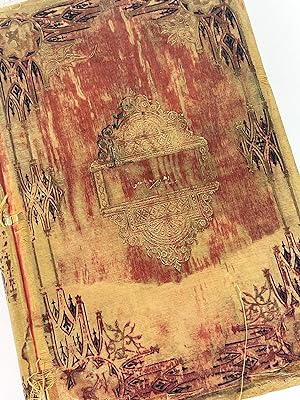
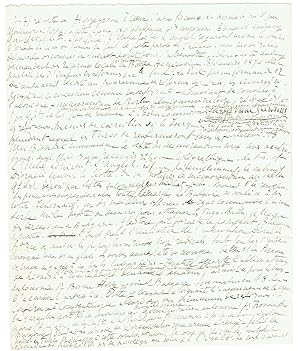

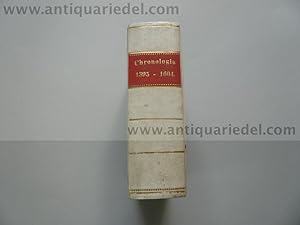
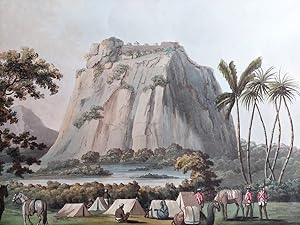
![Seller image for TURCICA: CANONS OU RÈGLEMENTS DE SULTAN SÉLIM II À SON RETOUR À CONSTANTINOPLE APRÈS UNE VICTOI[RE] COMPLETTE SUR LES ALLEMANDS, CONCERNANT LES ODGIAKS ET CASERNES DES JANISSAIRES. TRADUIT DE L'IDIOME TURC EN IDIOME FRANcAIS PAR JEAN BAP for sale by Antiquariat Dasa Pahor GbR](https://pictures.abebooks.com/inventory/md/md22701166697.jpg)
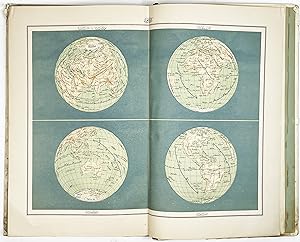
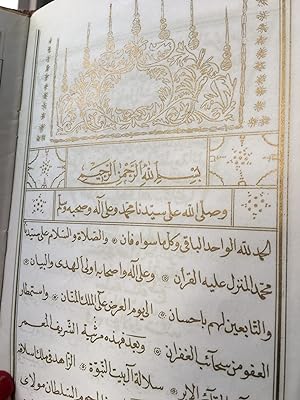
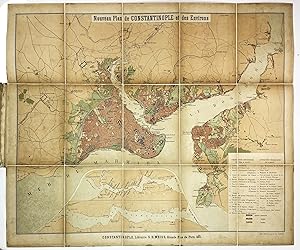
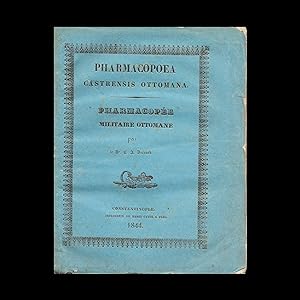
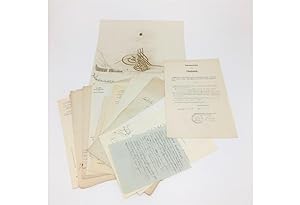
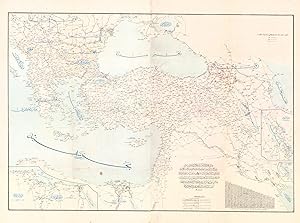
![Seller image for Muharebat-i meshure-i osmaniye albümü [Album of Famous Ottoman Battles] for sale by Antiquariat Dasa Pahor GbR](https://pictures.abebooks.com/inventory/md/md31521306401.jpg)
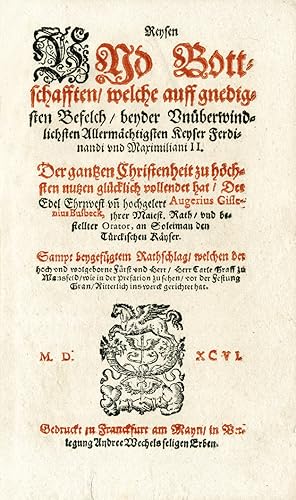
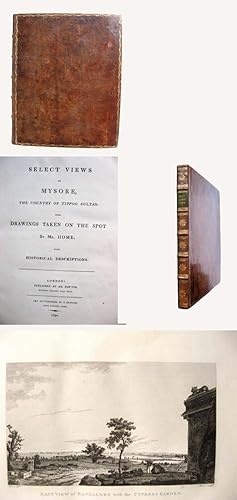
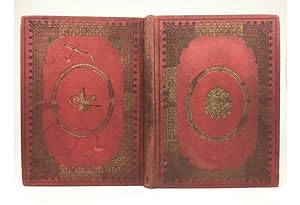
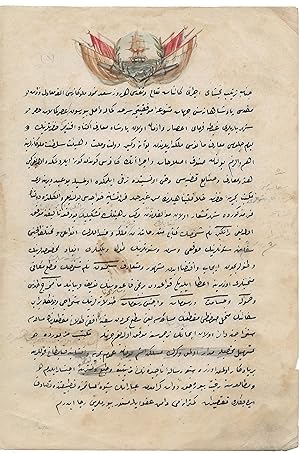
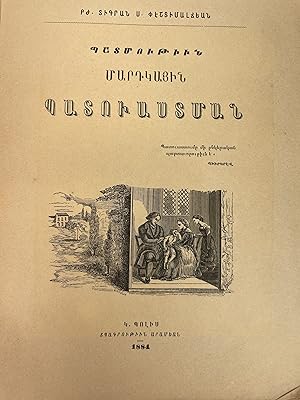
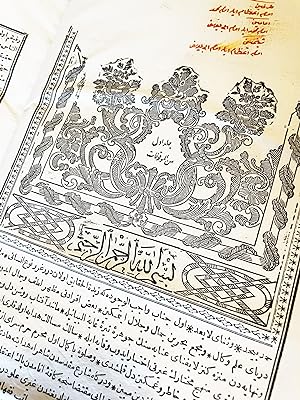
![Seller image for Navigations Karte Der Donau von Semlin an bis zu ihrem Ausfluss ins Schwarze Meer : zur genauesten Kentnis aller in derselben befindlichen Inseln, Sandbänke, Wirbel, Klippen u.s.w. so wie aller an den beiderseitigen Ufern gelegenen Städte, Dörfer und andere Ortschaften, wobei zugleich die verschiedene Breite und Tiefe des Stroms bestimt angegeben ist, zuerst aufgenomm[m]en von dem k.k. Pontonier Hauptmann von Lauterer, da derselbe den k.k. Herrn Internunzius Freyherrn von Herbert bis Ruszug führte, hierauf aber weiter ausgearbeitet und verbessert von dem k.k. Hauptmann Freyherrn von Tauferer bei Gelegenheit, als derselbe das erste Seeschiff aus der Kulpa auf der Donau nach Konstantinopel führete. for sale by Antiquariat Dasa Pahor GbR](https://pictures.abebooks.com/inventory/md/md31050681268.jpg)
